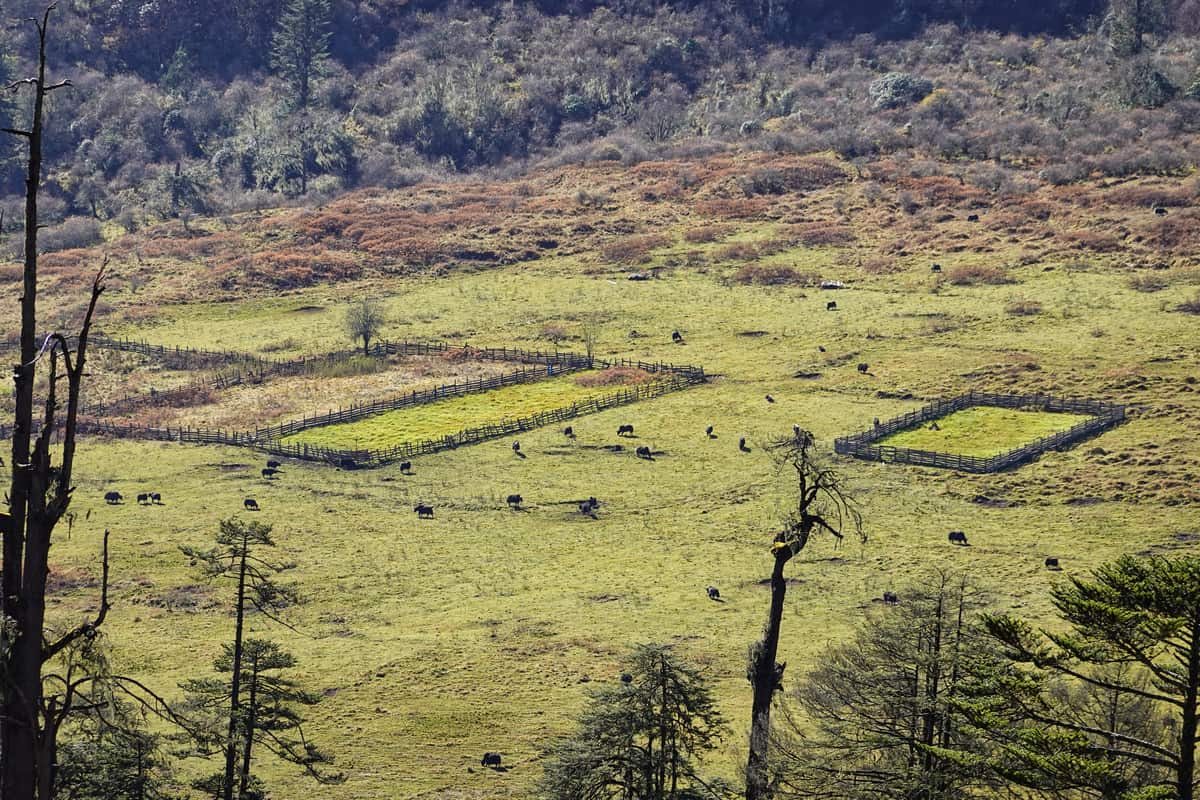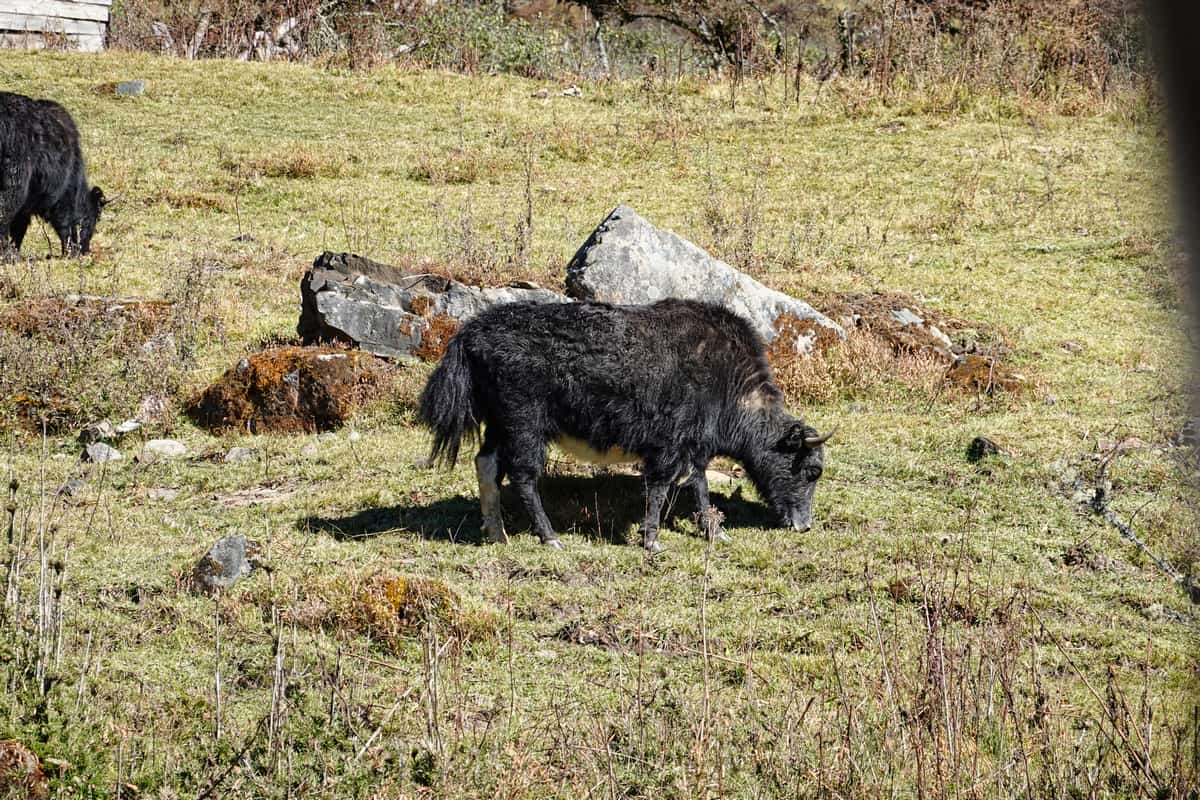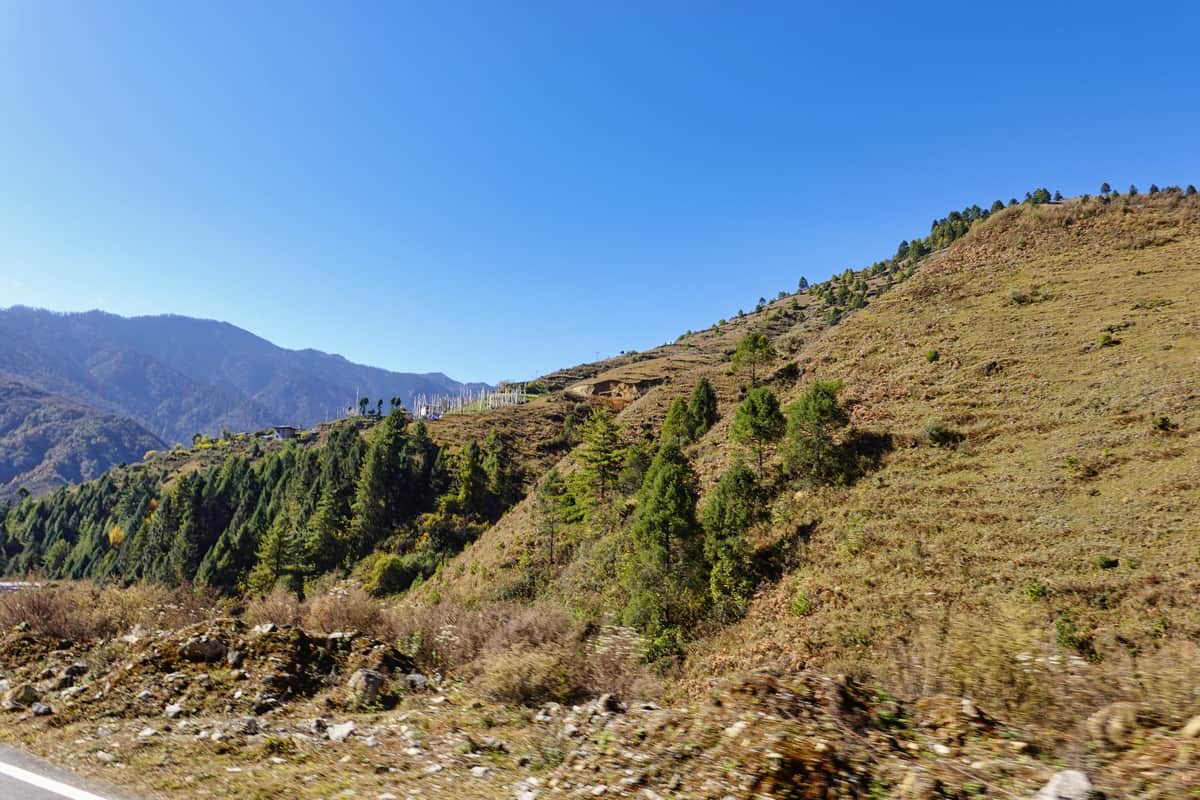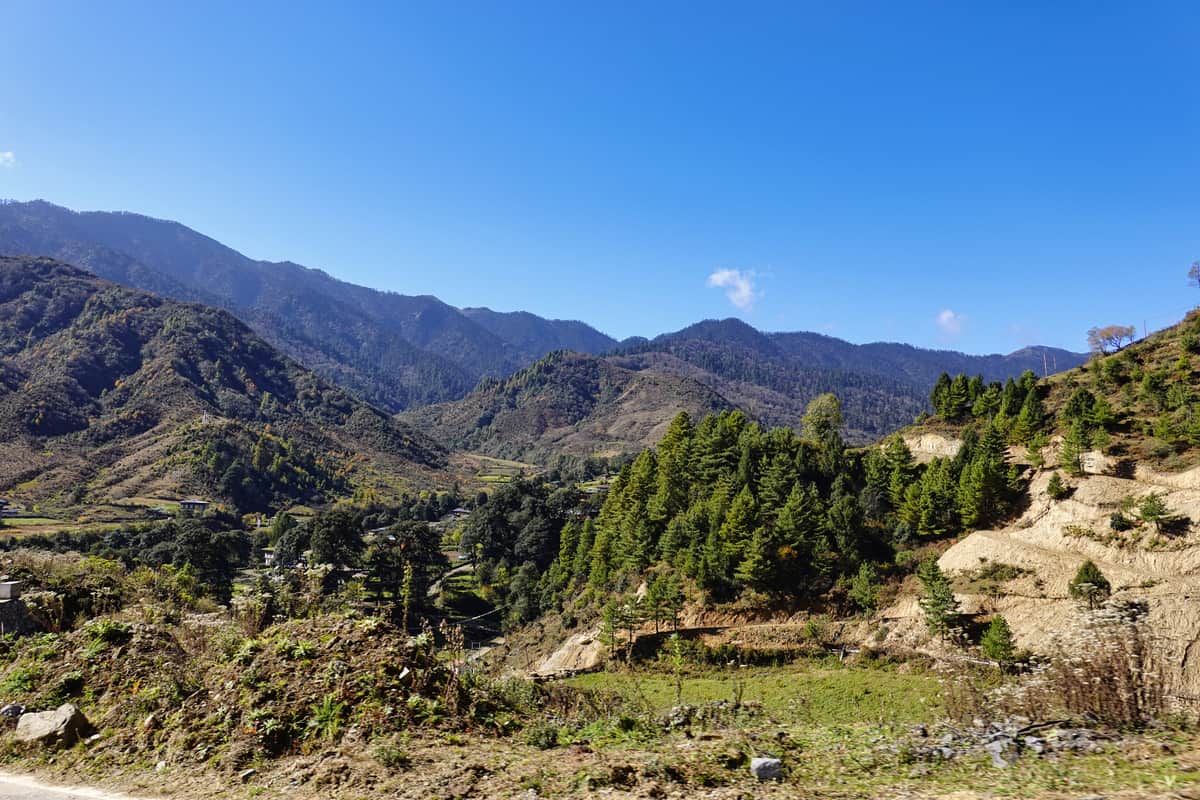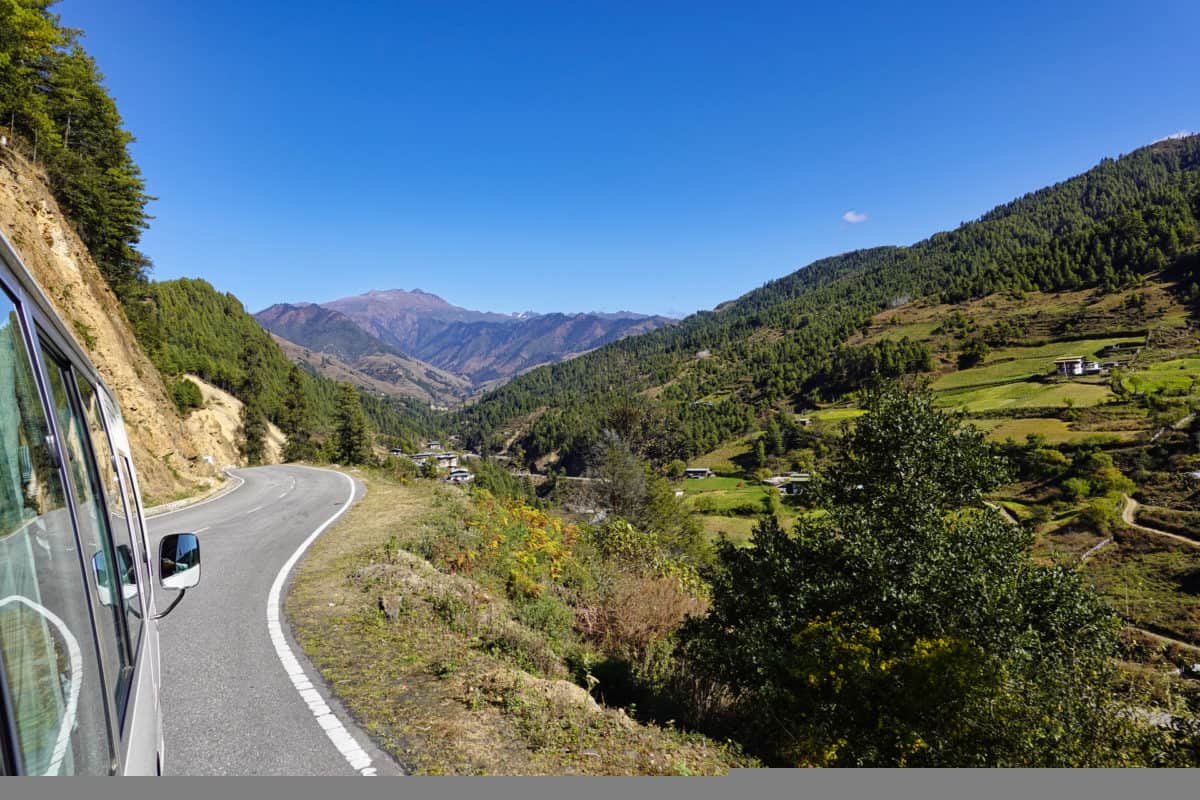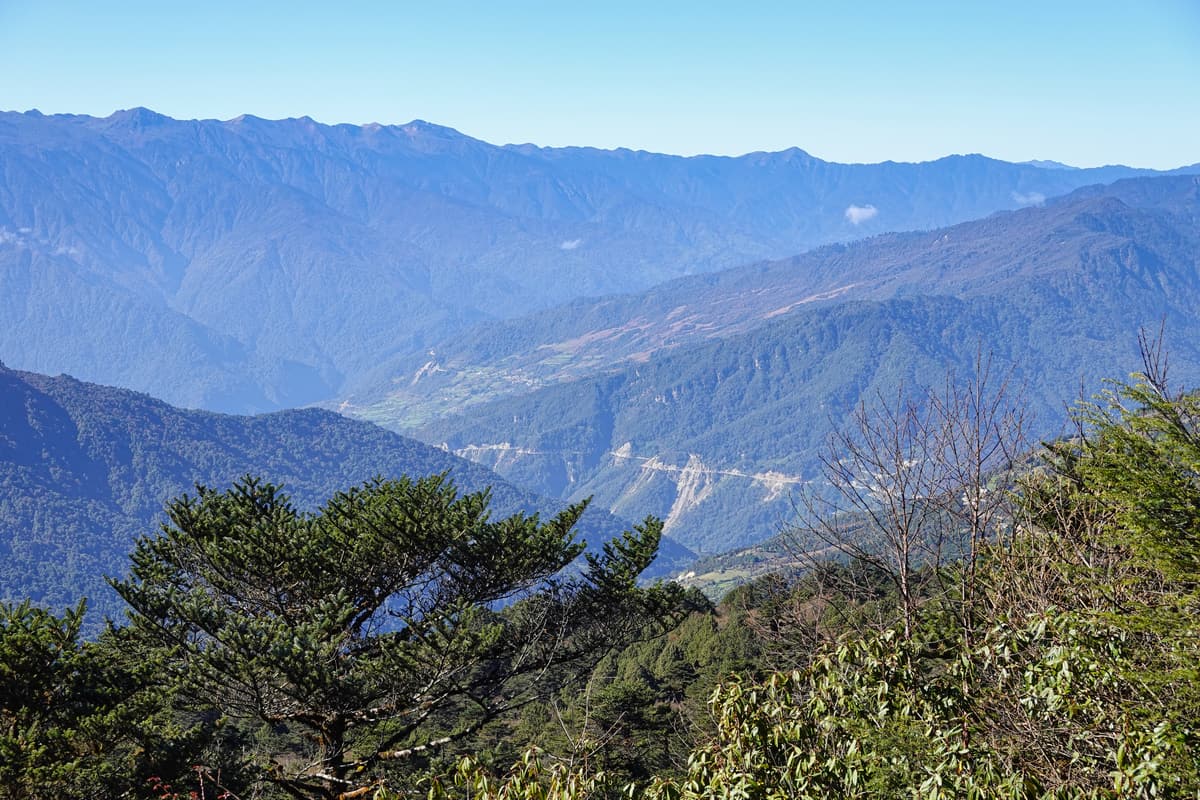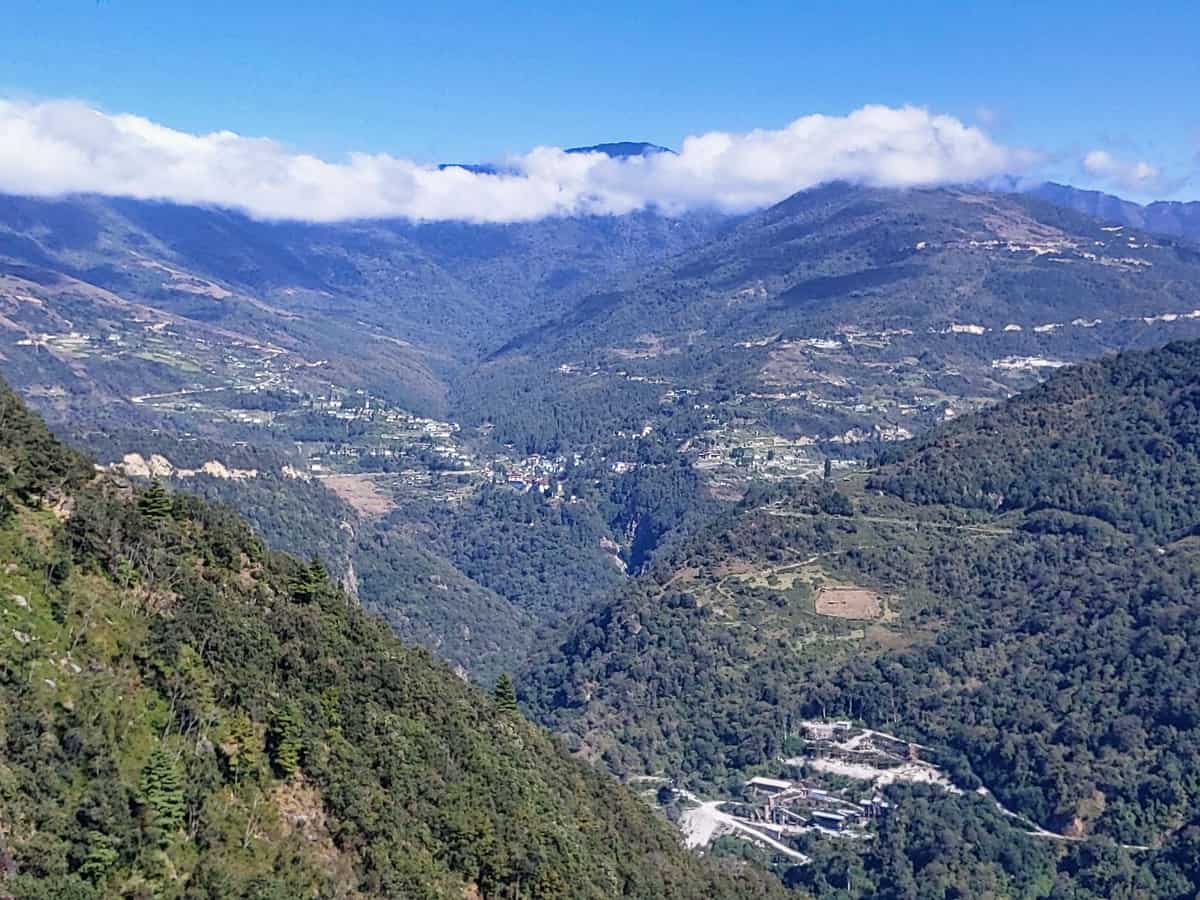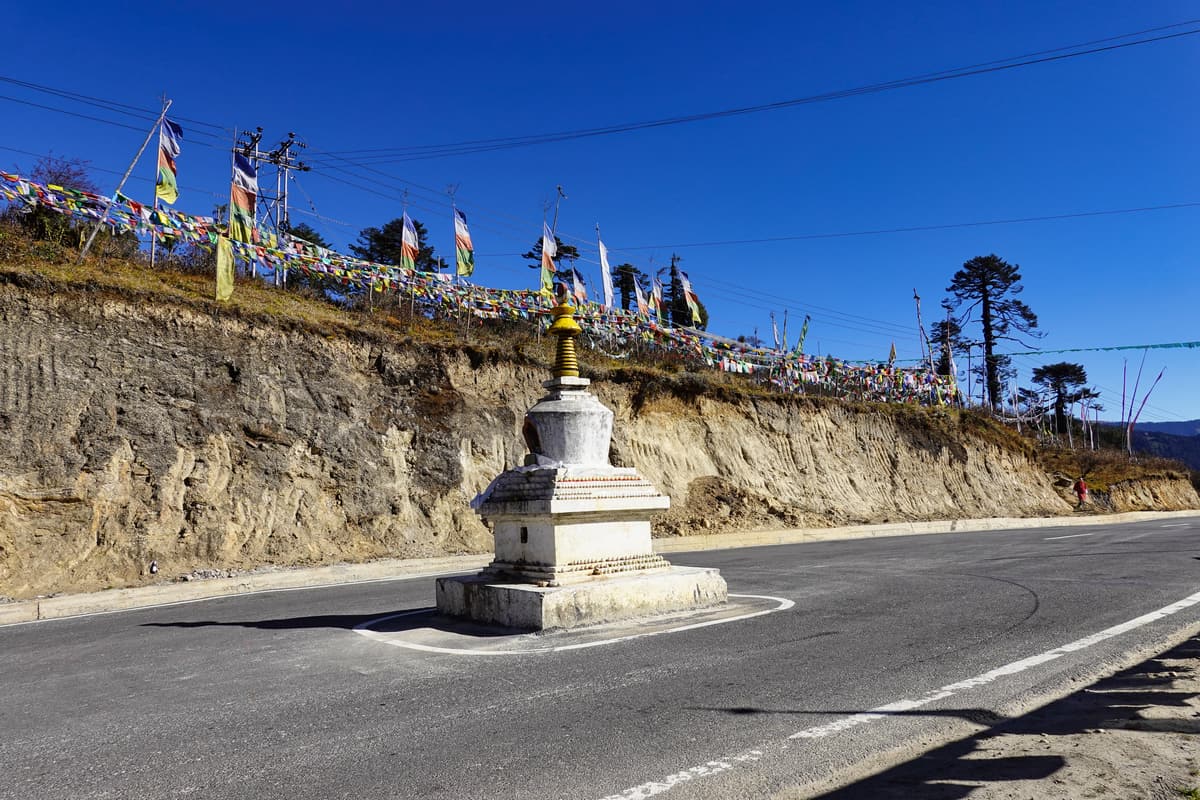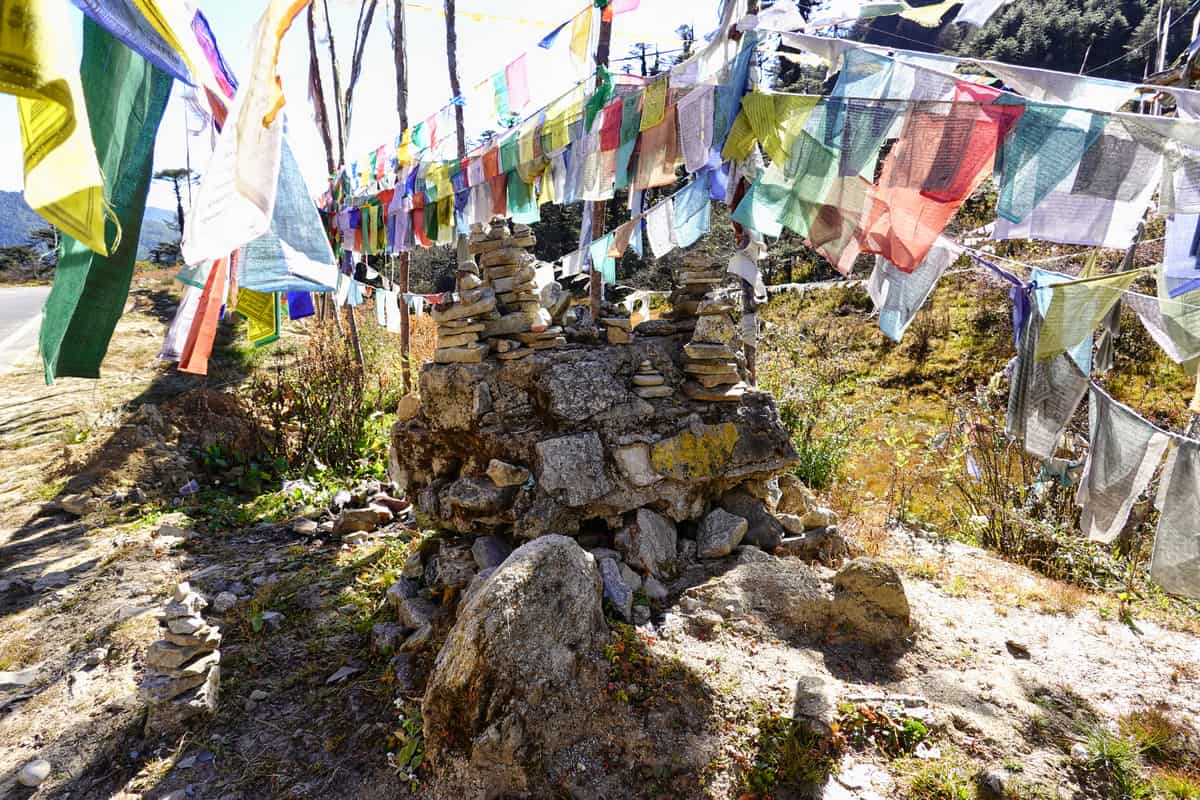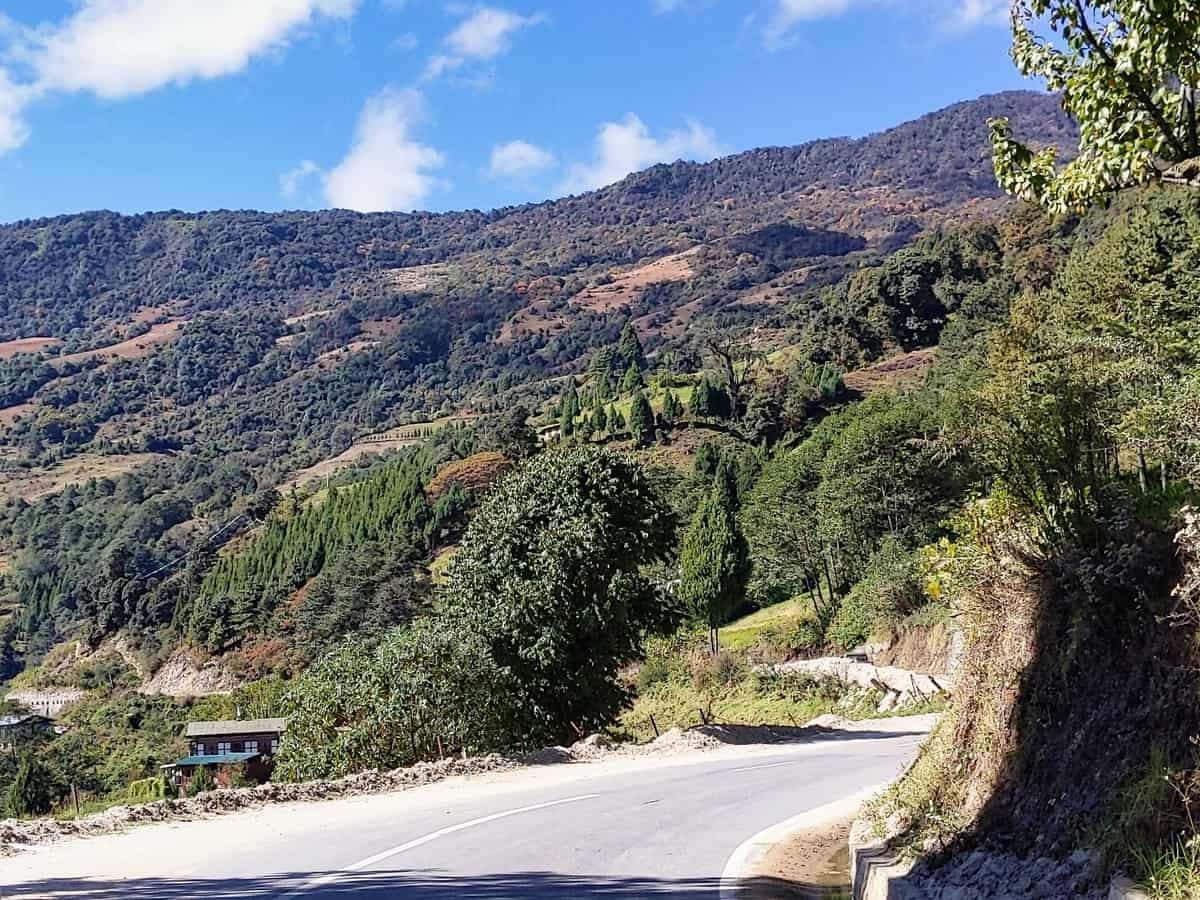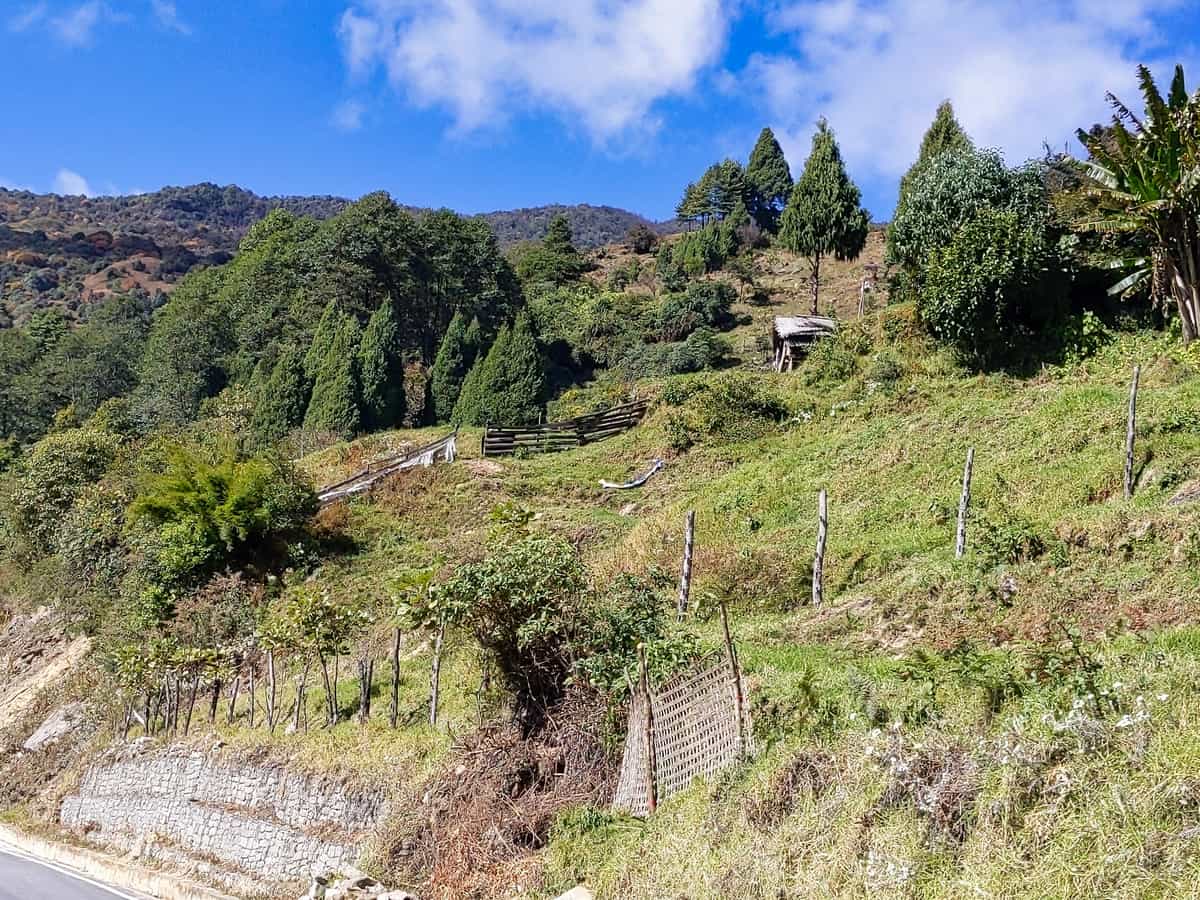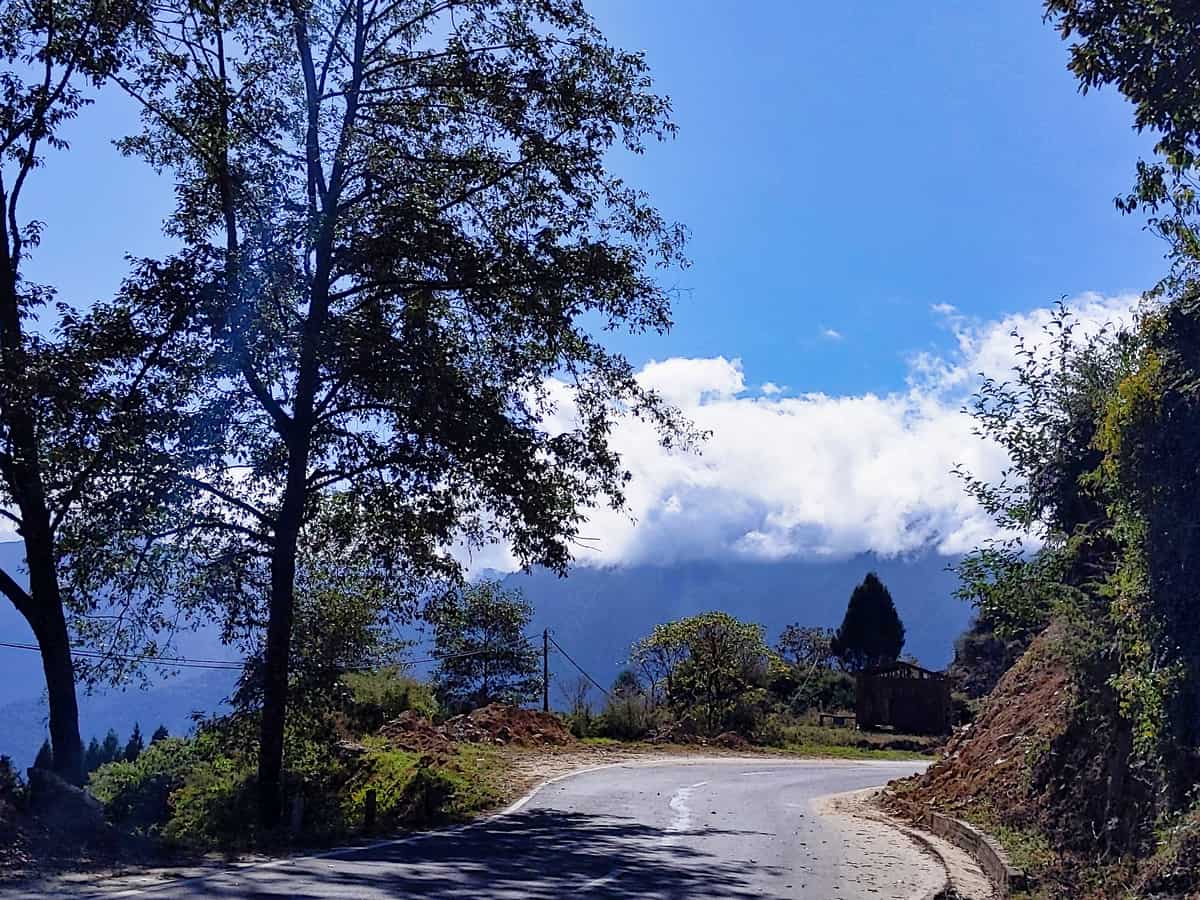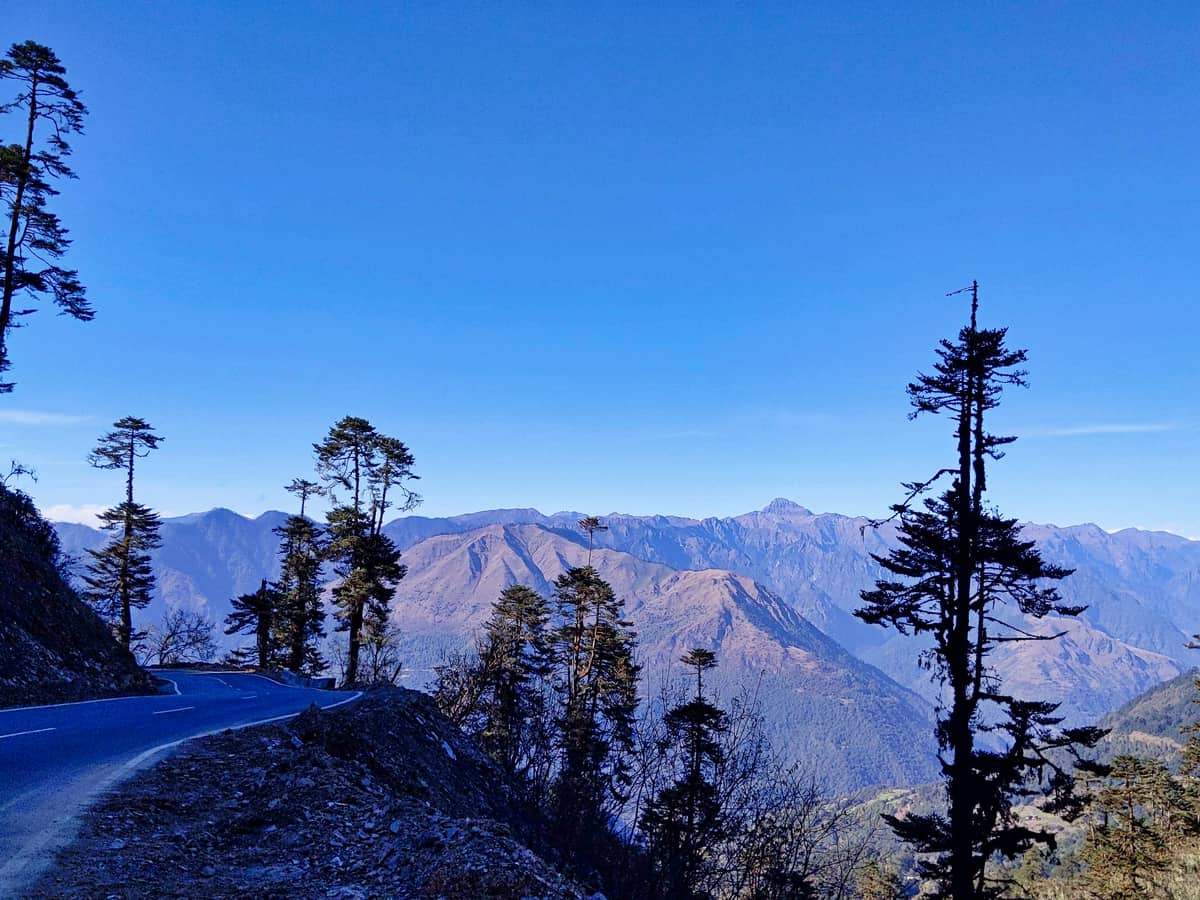Embrace Bhutan Cultural Tour
Lateral Road | Bhutan
12 Nov 2019 | Tue
Day 06 of 13
Riding on the Edge of Bhutan’s Lateral Road
Traveling across Bhutan on the famous East-West Lateral Road was truly an unforgettable adventure! This method of travel gave us the wonderful opportunity to experience all that Bhutan has to offer – its beautiful people, fascinating Buddhist culture, impressive architecture, beautiful Himalayan mountains, and natural beauty in all directions.
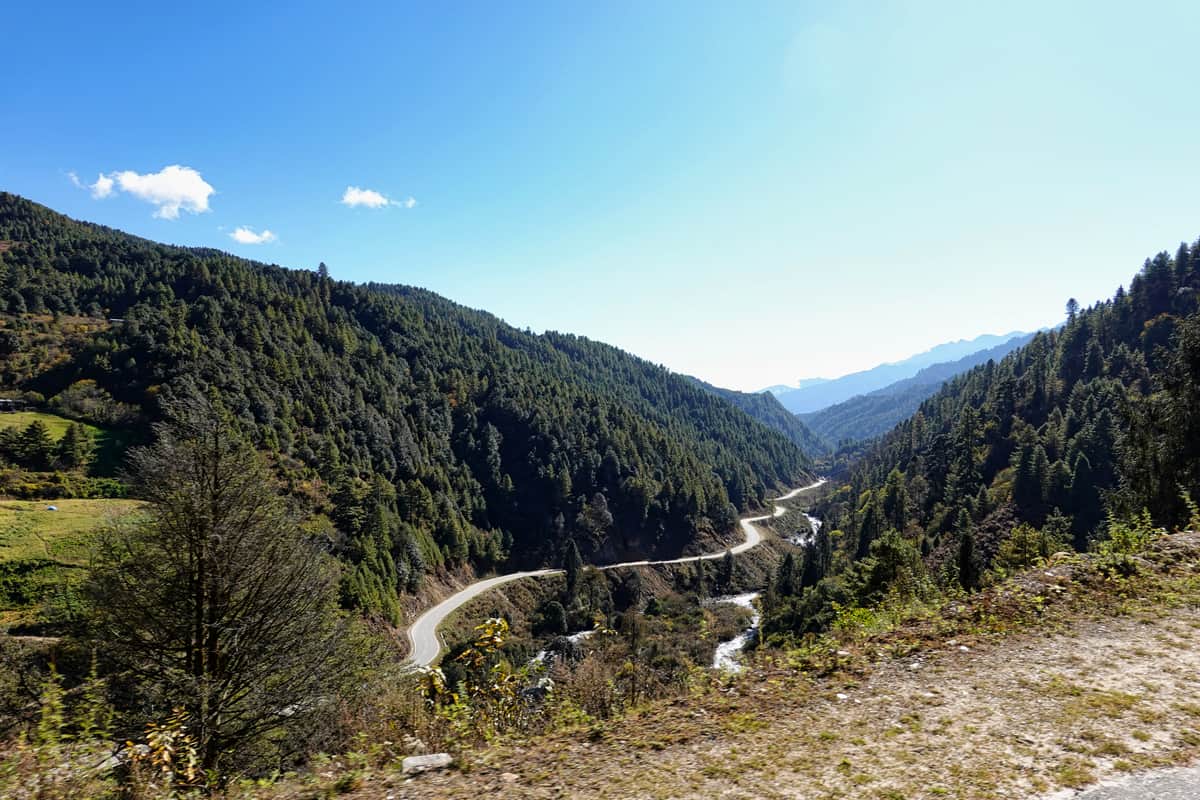
Map of Our Trip Across Bhutan
The map below covers the distance we will be traveling over our 13-day tour of Bhutan. If you zoom in and follow along, you will see a neverending series of winding curves, bends, and hairpins throughout the duration of the drive. Medication (or other remedies) is highly recommended for people who suffer from motion sickness.
Paro to Tang Valley on Bhutan’s Lateral Road
Our Tour Vehicle
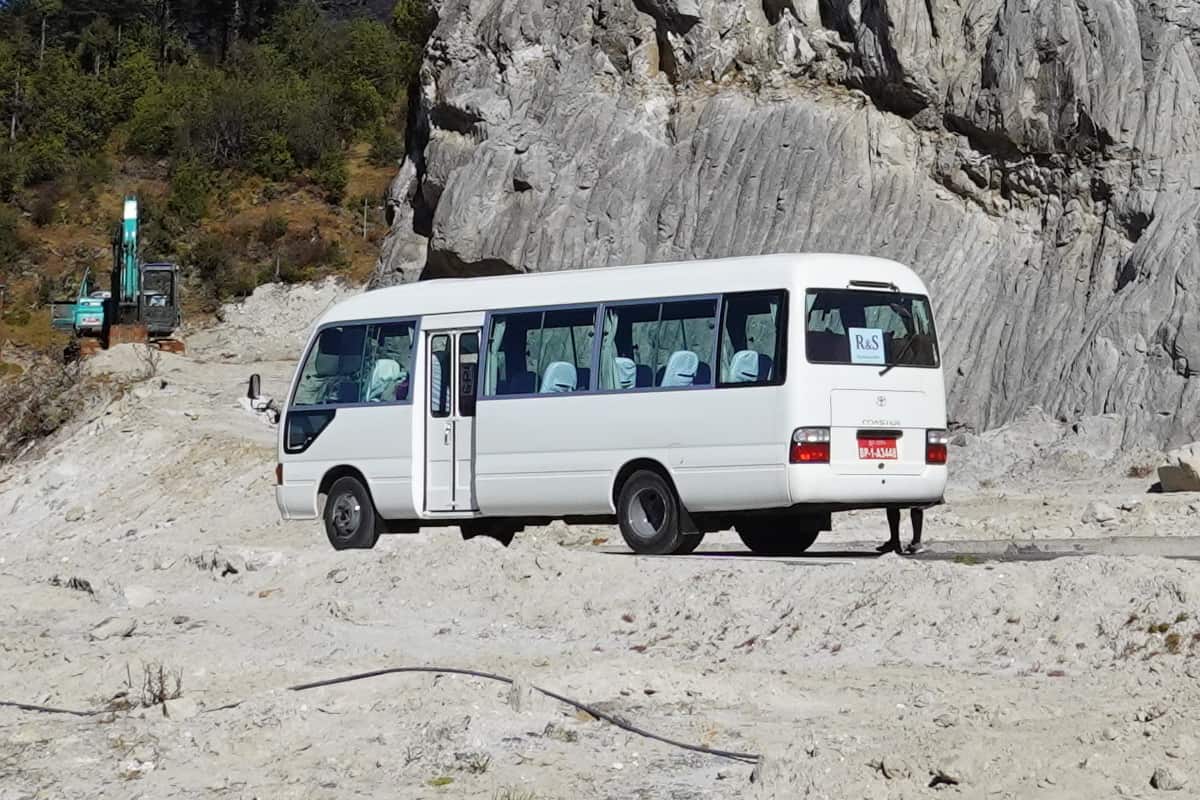
Our vehicle was a large Toyota Coaster Bus (a popular tourist vehicle in Bhutan). It’s a perfect size vehicle (not too small and not too big) that can accommodate 15-20+ people. These types of vehicles are roomy, comfortable and give passengers great visibility on long road trips.
Road Conditions Across Bhutan
We found the road conditions on the Lateral Road to vary quite a bit (depending on its location). Around Paro and Thimphu (capital) the roads were very good (using modern highway design). These improved road conditions continued until you got to Dochula Pass where it seemed to start deteriorating. As we continued along the Lateral Road, we experienced some areas that were very good and some that were very rough – with uneven pavement (potholes, missing shoulders, graveled sections), various road widths (sometimes would narrow to a single lane), and numerous land and rock slide areas.
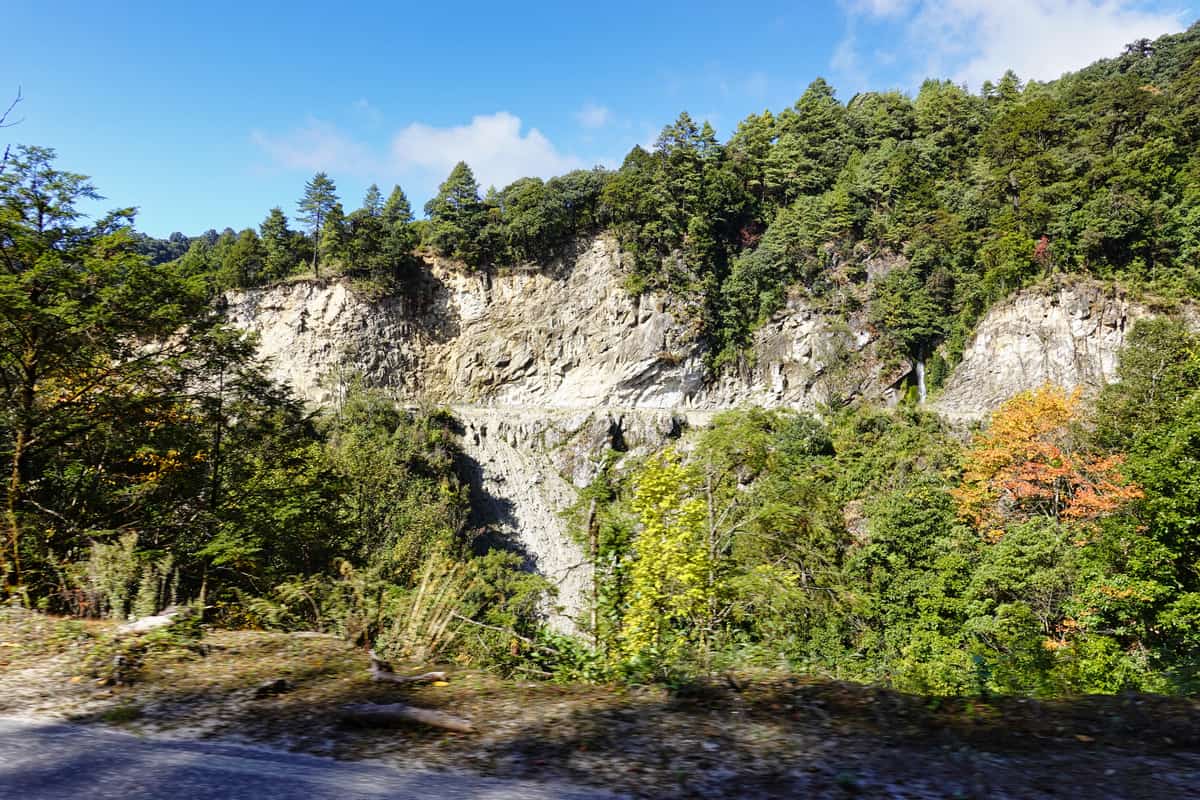
Road Construction Projects – Bridge Replacements
We also encountered several areas that were under construction (clearing rock slides, repairing washed-out areas, replacing bridges, etc.).
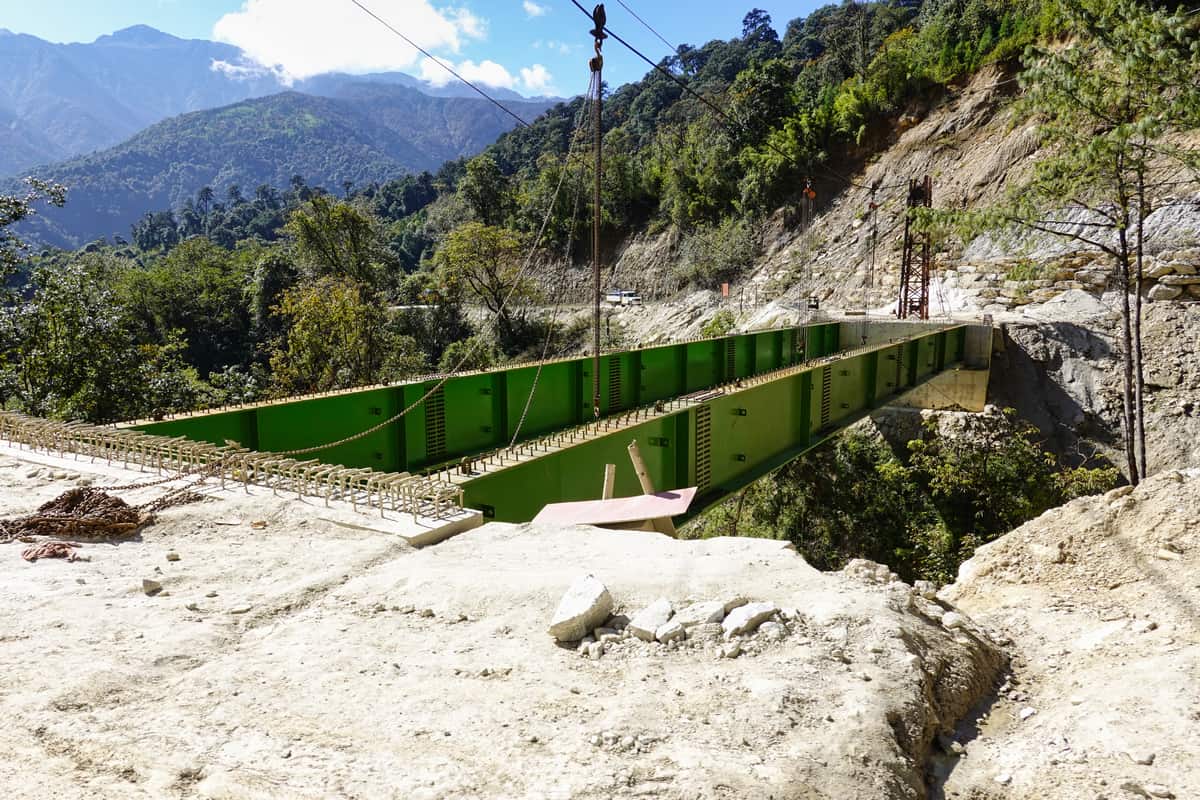
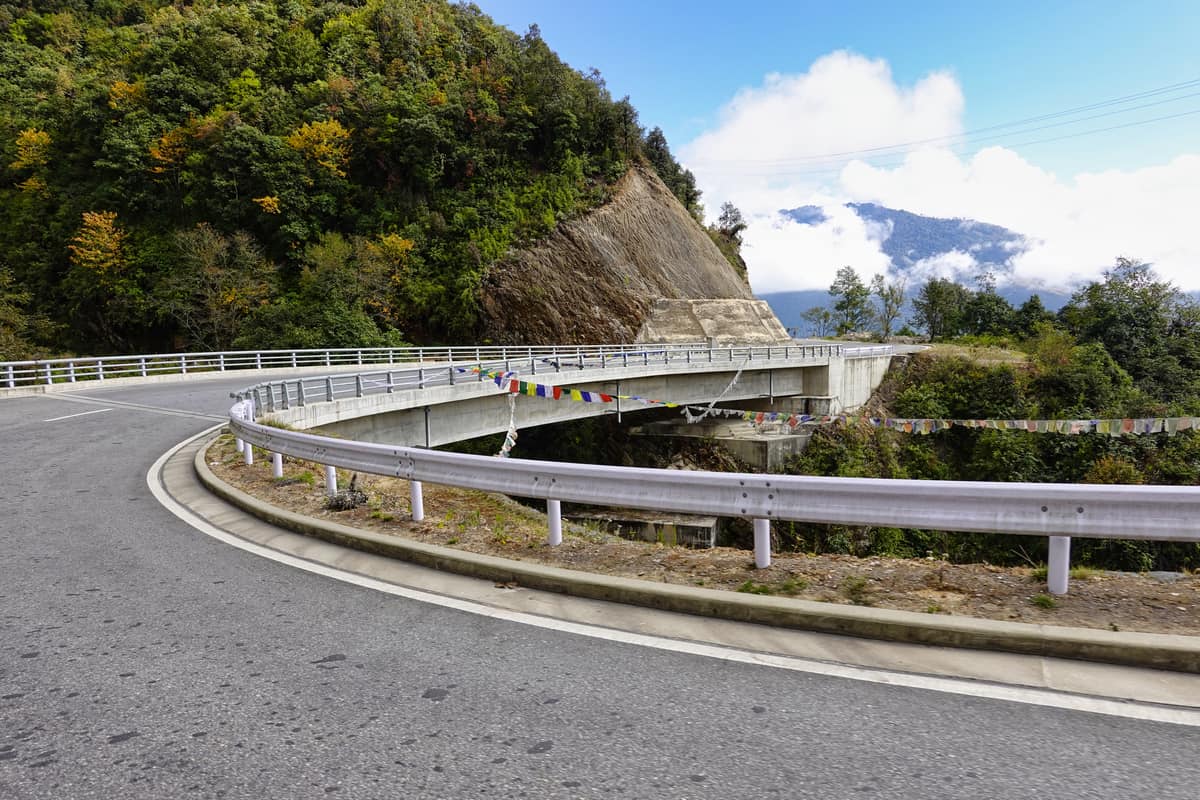
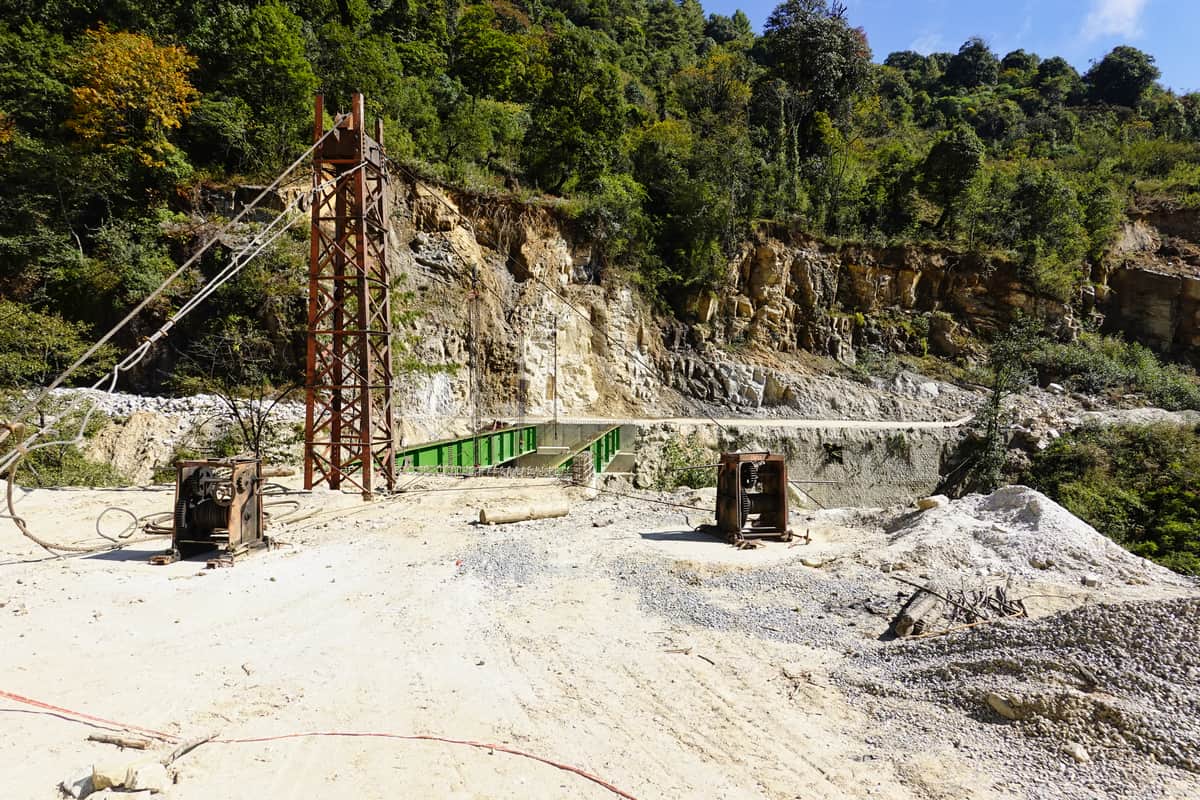
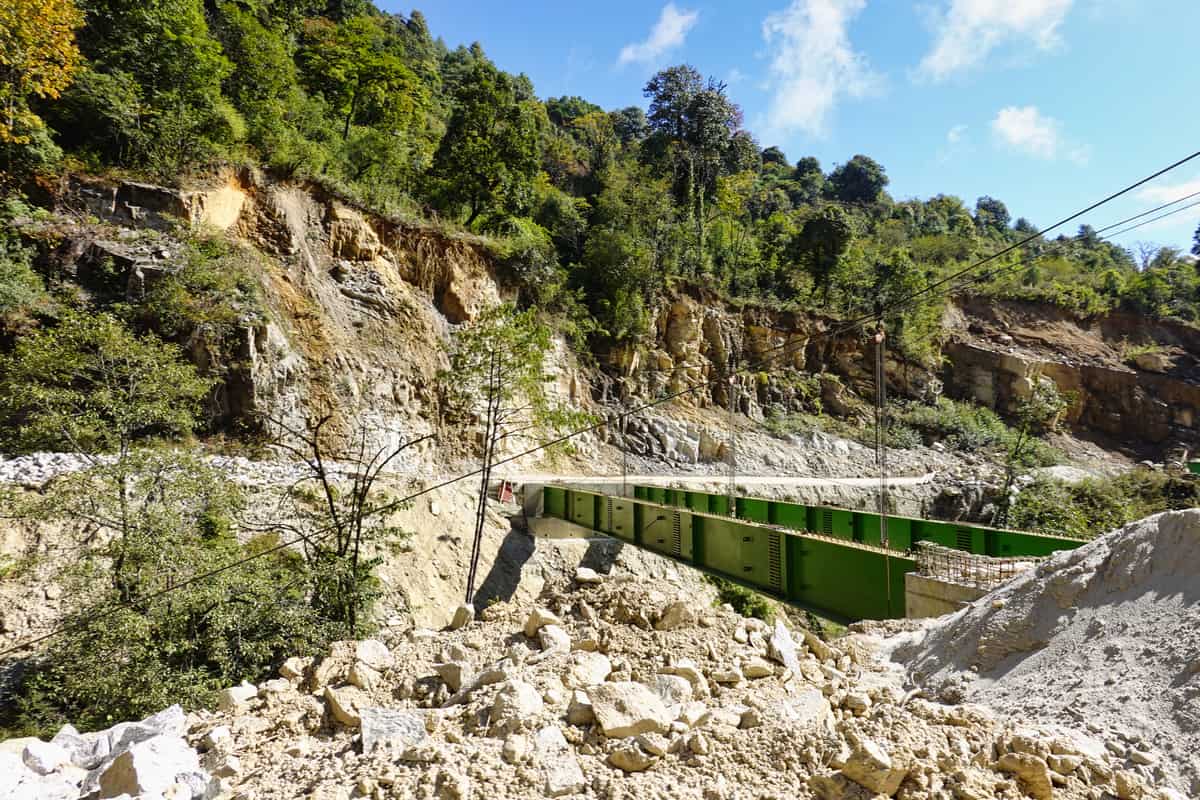

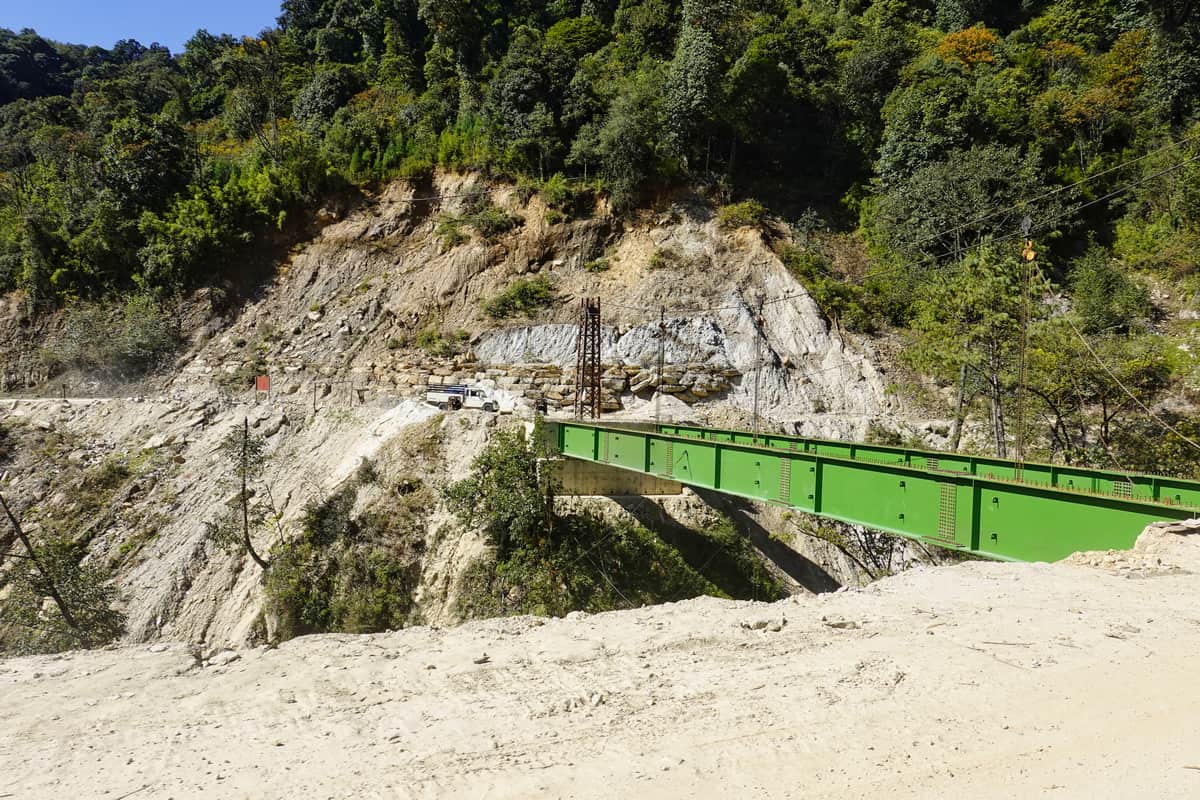

Driving On The Lateral “Edge” of the Road!
There were many spots where the road was very narrow (one lane), which sometimes caused issues when passing oncoming traffic. This was a bit nerve-wracking in curve situations where our driver was forced to push the vehicle on the outside edge of a road and as a passenger, all you see is straight down the mountain! 😧 fun stuff! So maintaining a speed that is “slow, steady, and careful” is the best approach when driving on Bhutan’s Lateral Road.
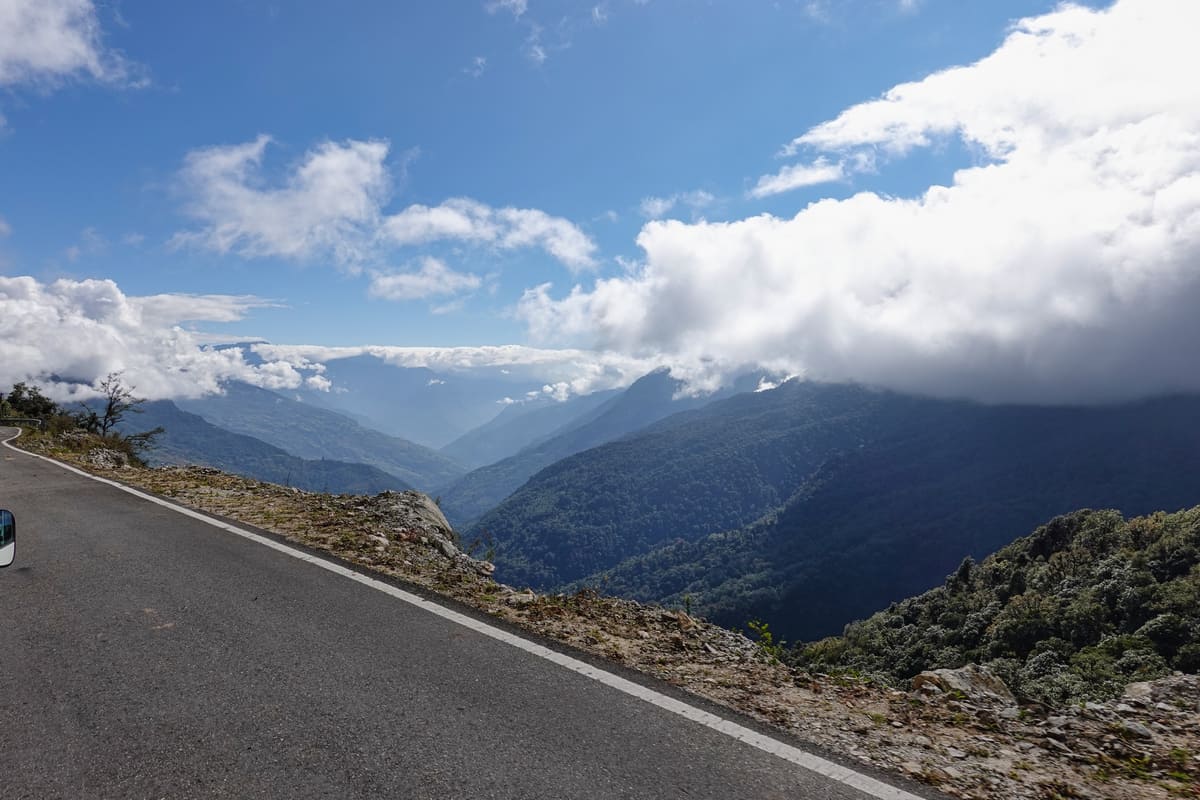


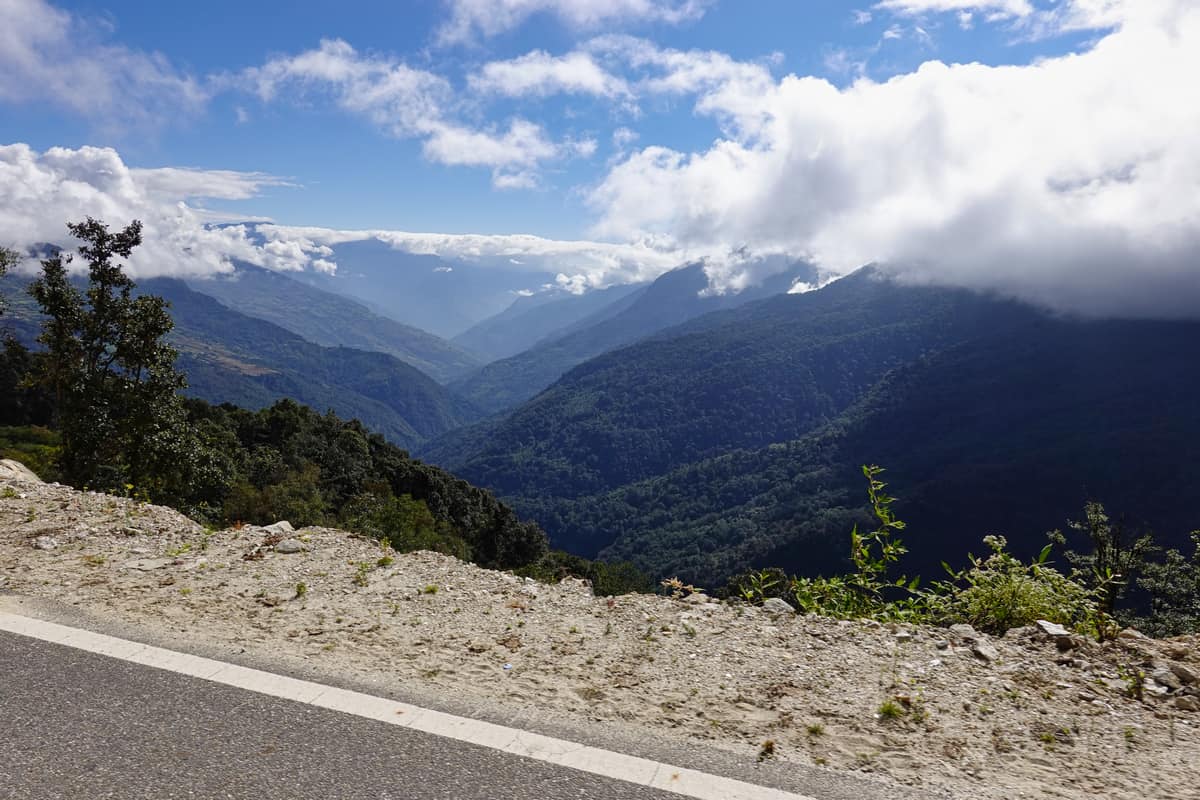
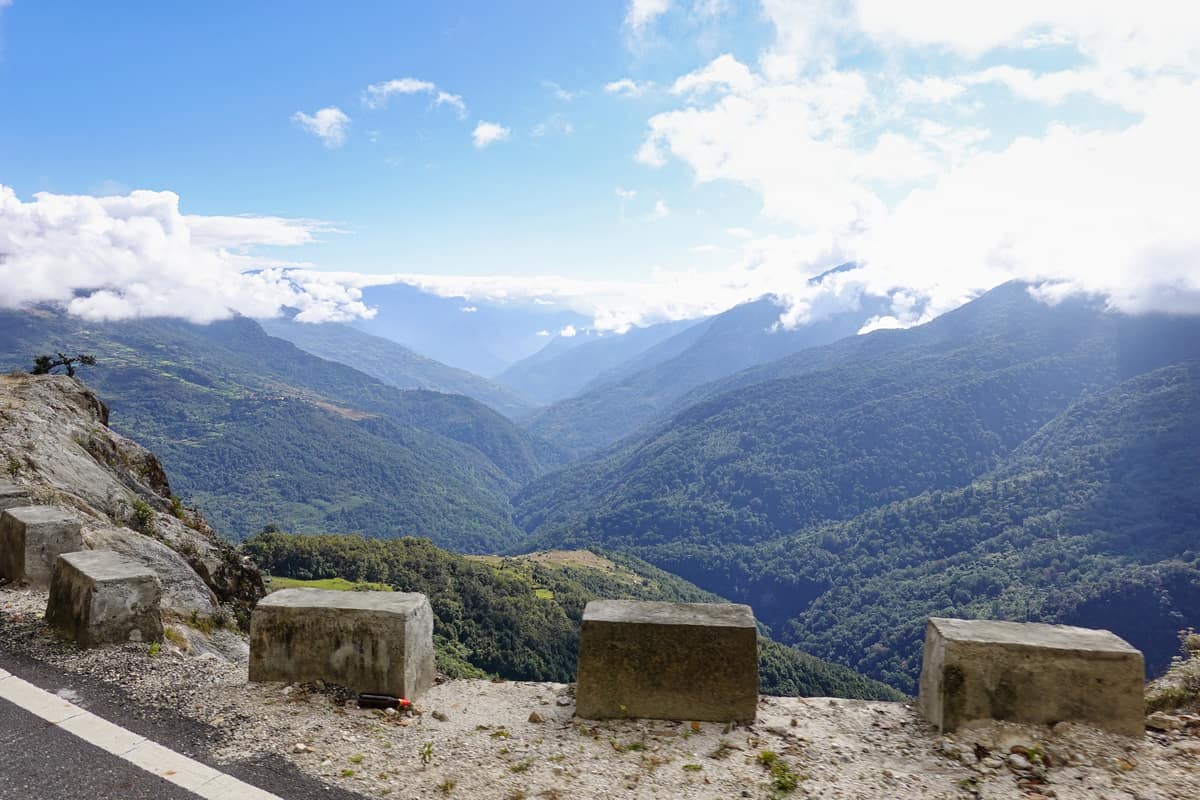
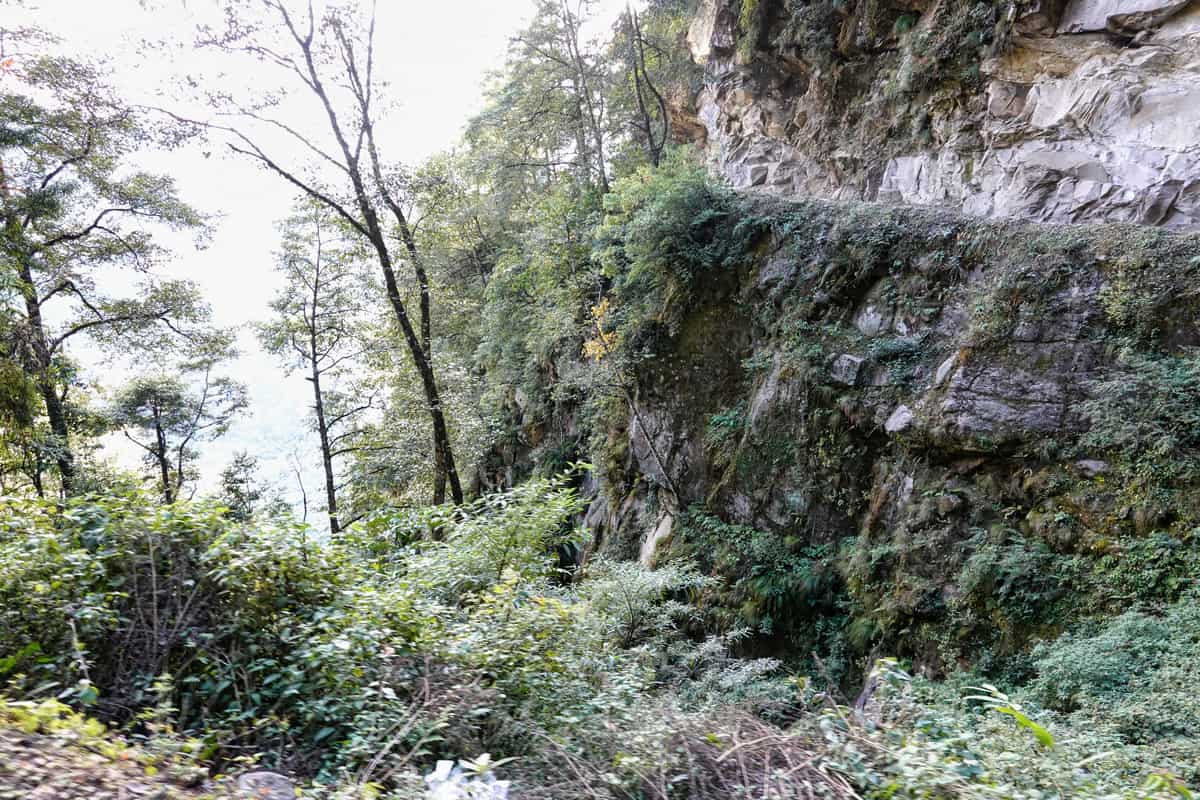
Sharing The Road
Traffic can be an issue at times – you are having to share the road with many other types of vehicles such as freight trucks, passenger buses, tour vans/buses, construction equipment/vehicles, and private cars/trucks.
Examples of Road Rock Cuts
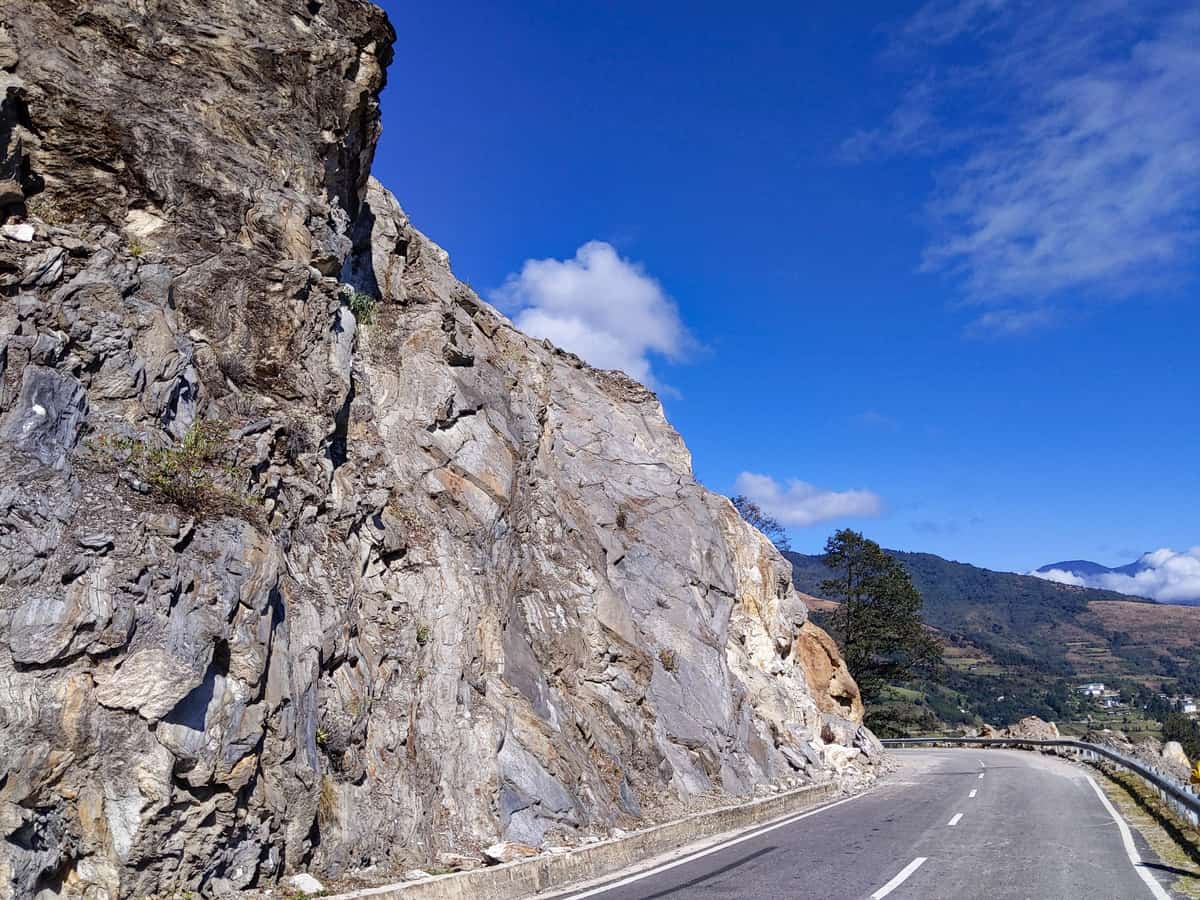
Here is examples of several road rocks cuts that we passed through.
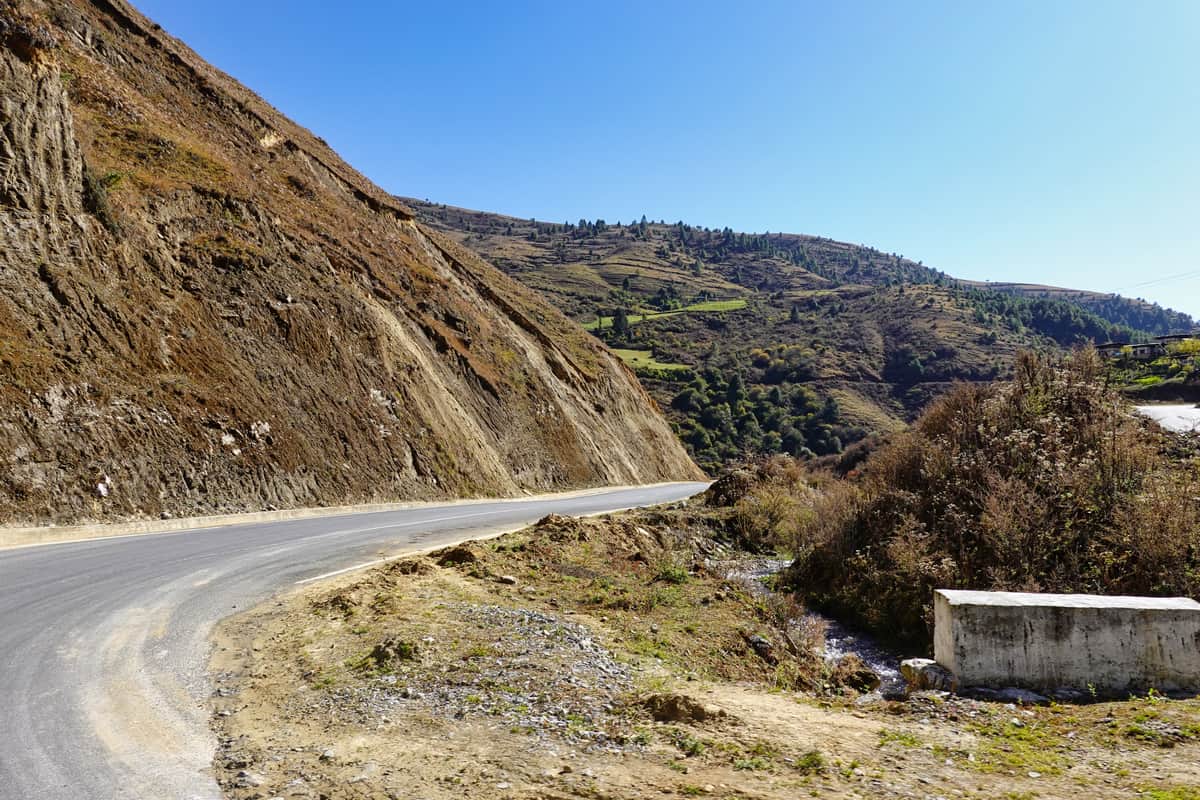
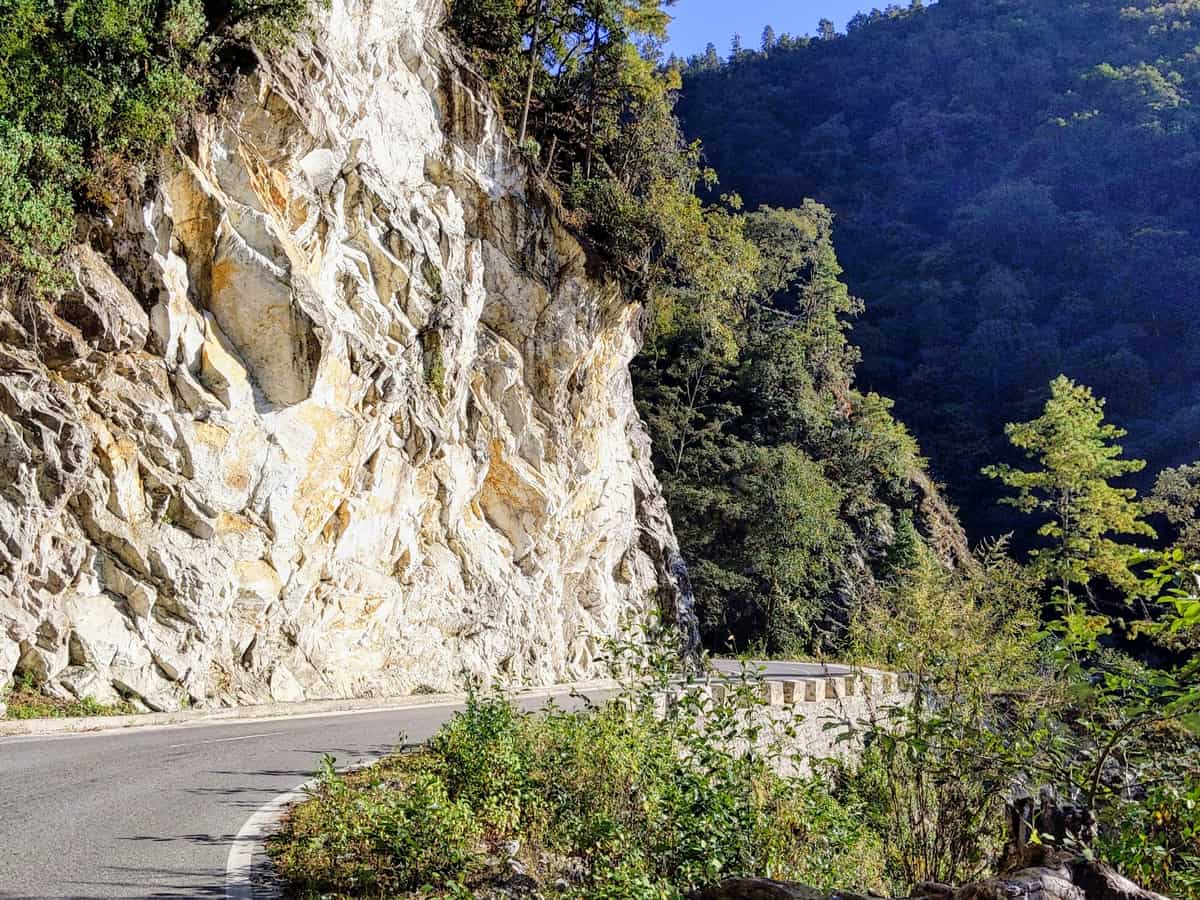

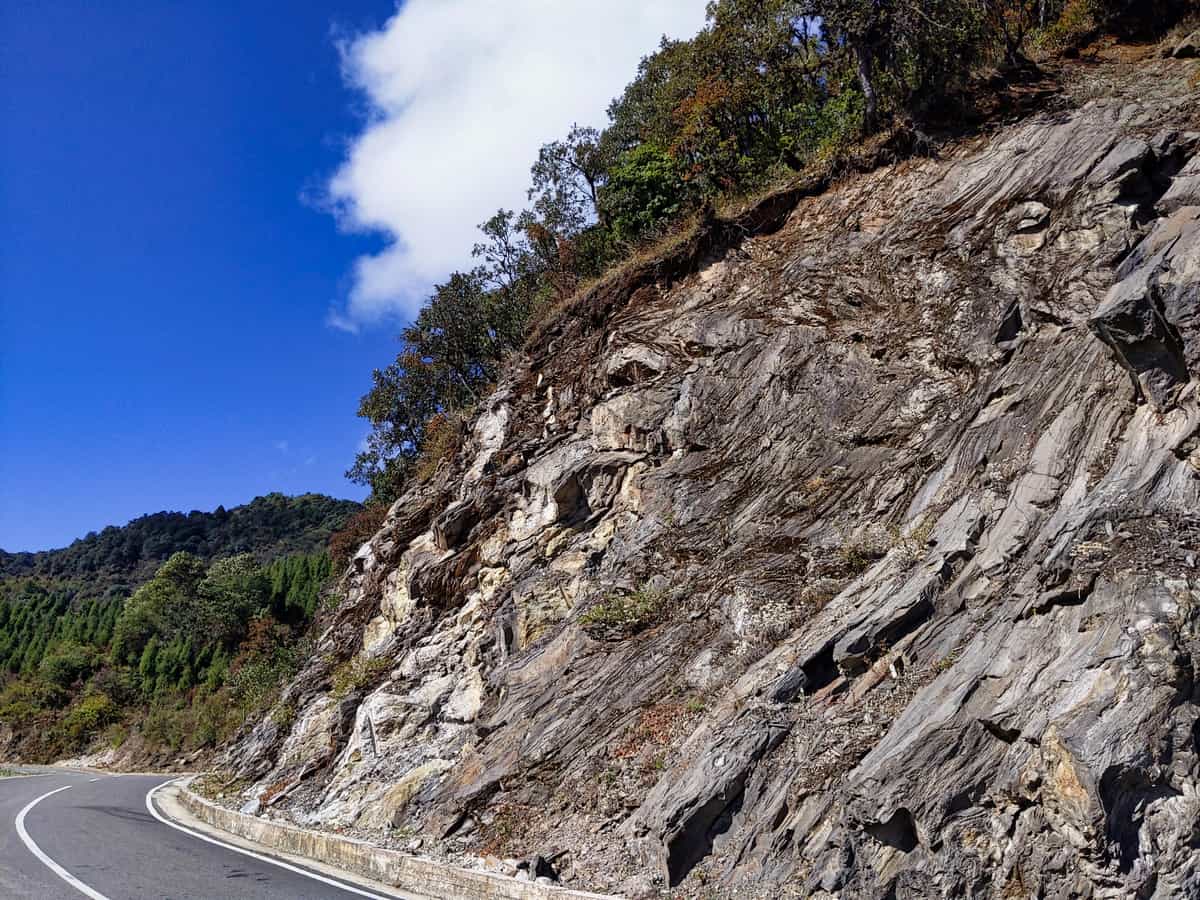
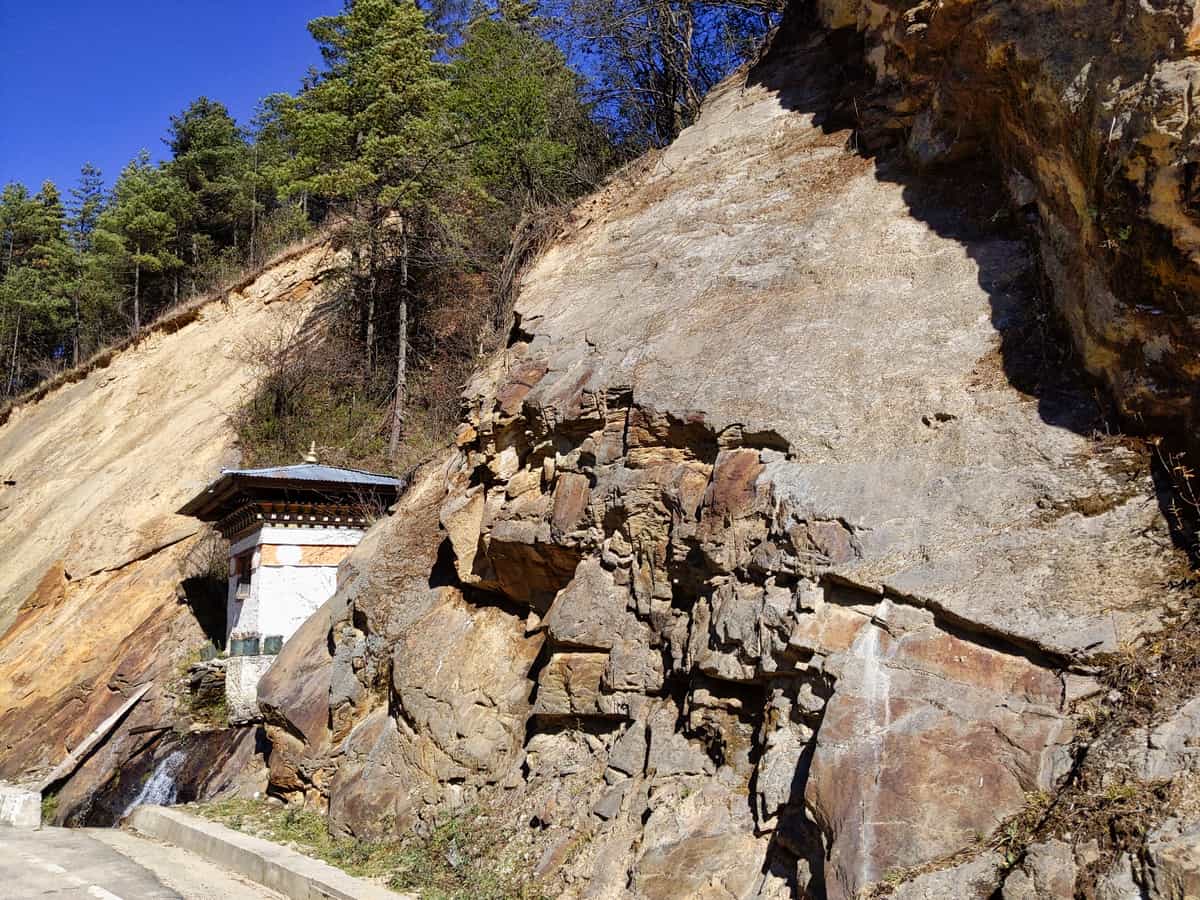
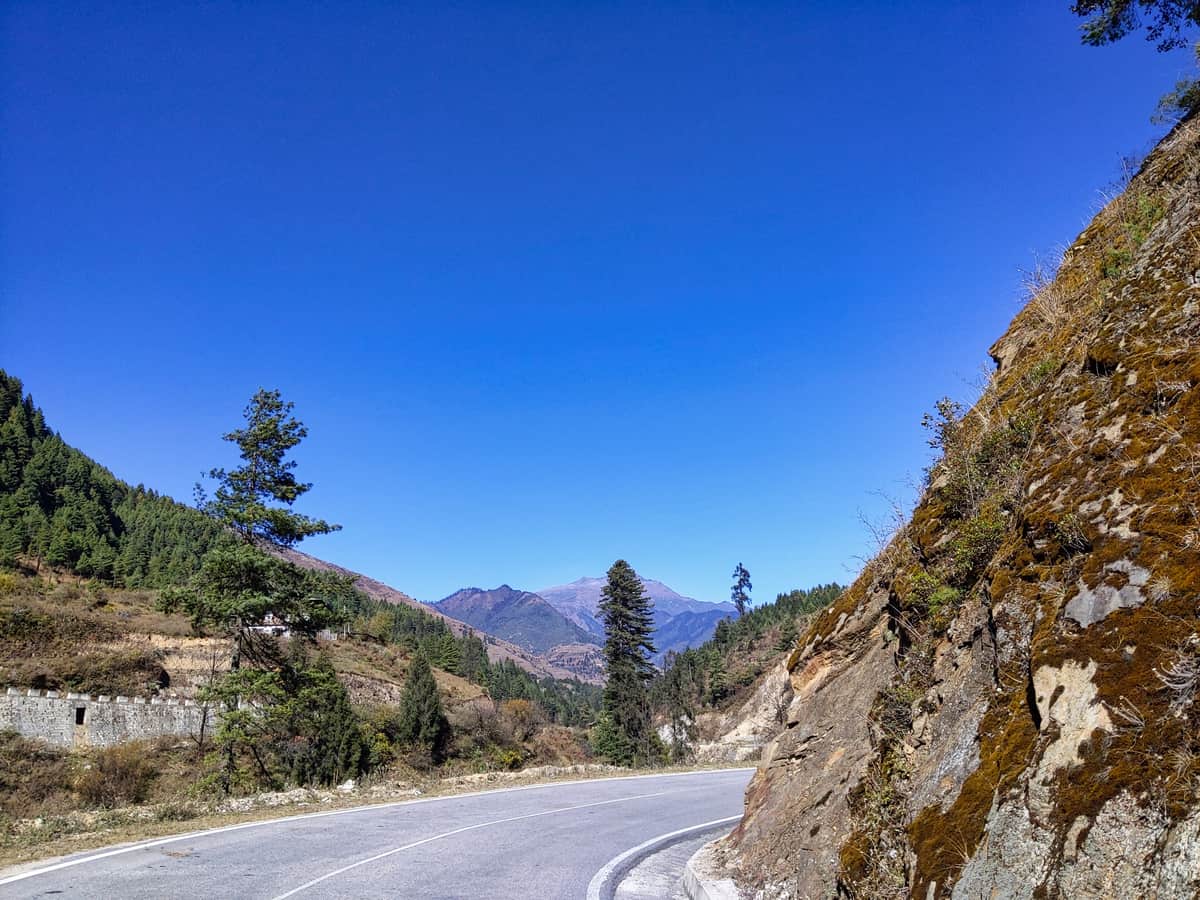
Serious Road Issues Near Trongsa
The roughest section we drove through was right before we got to Trongsa.
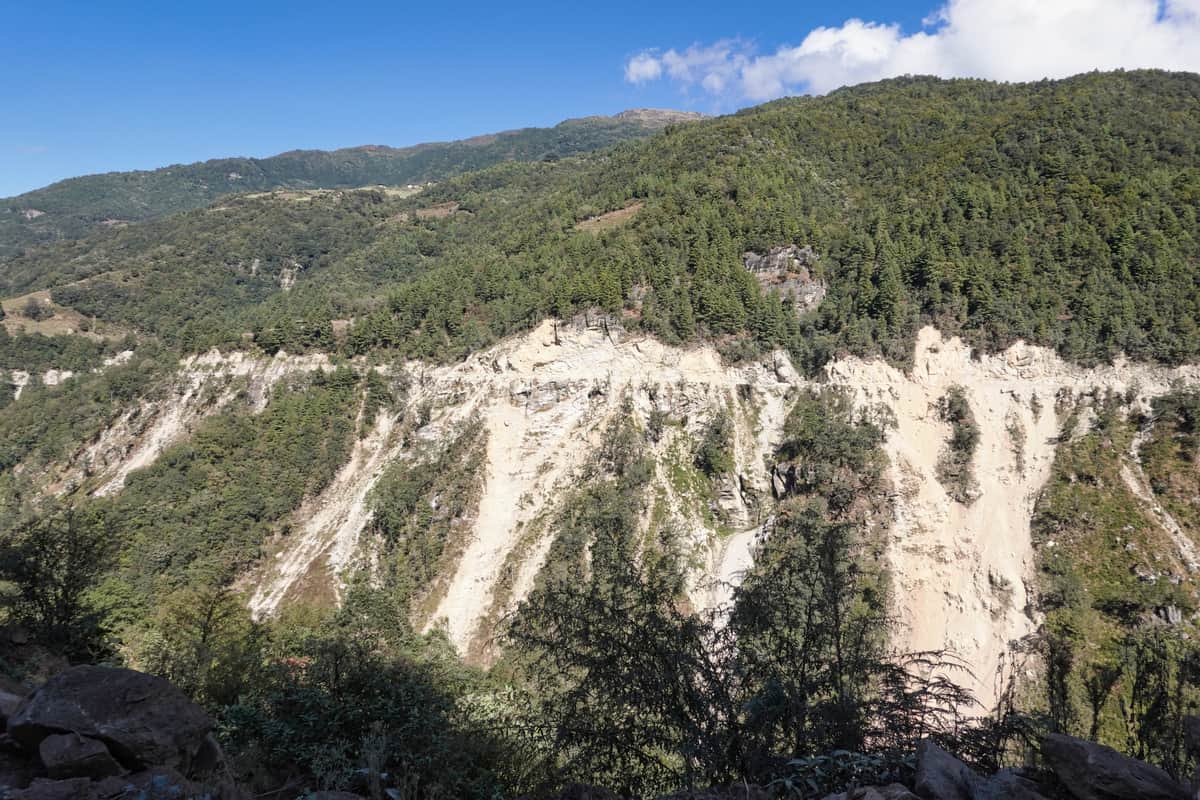
Due to a combination of bad geologic conditions (unstable rock and soil) and previous failed road construction projects, this large section of the Lateral Road has severe stability issues causing numerous land and rock slides.
The photos below should be a good visual of why we were so nervous driving through this unstable area!

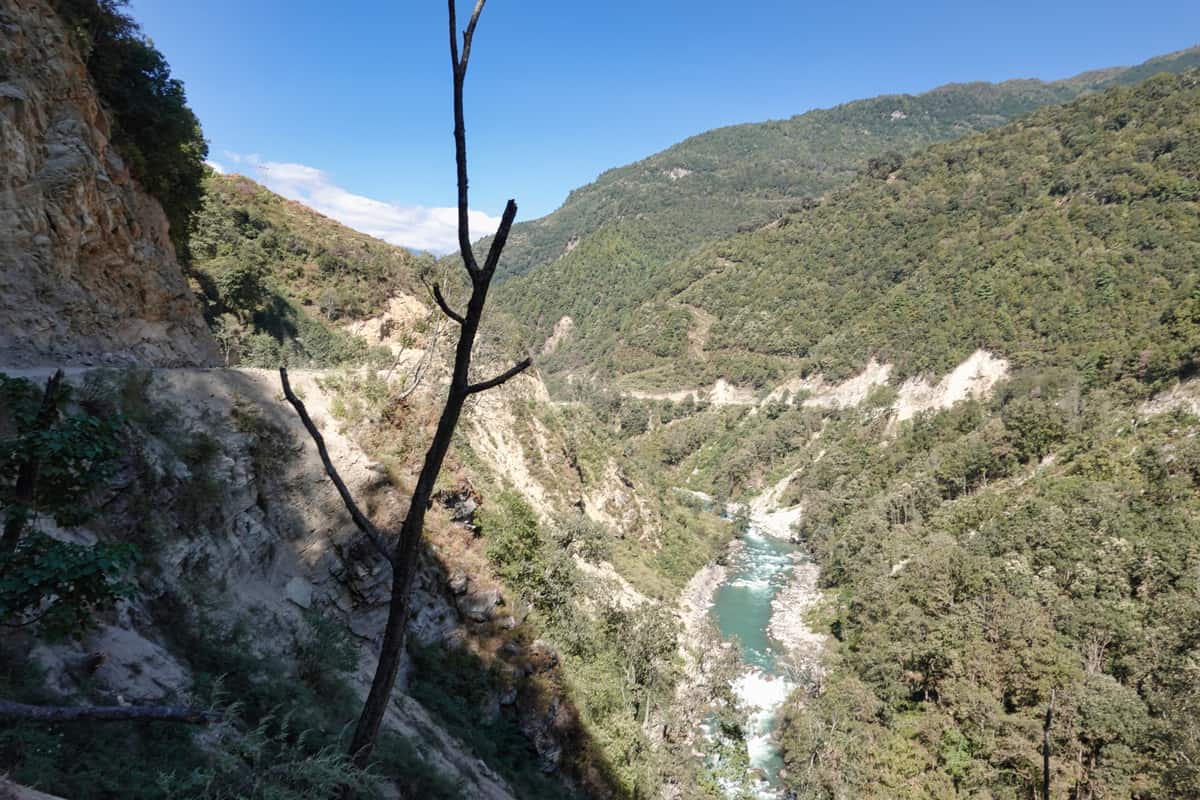
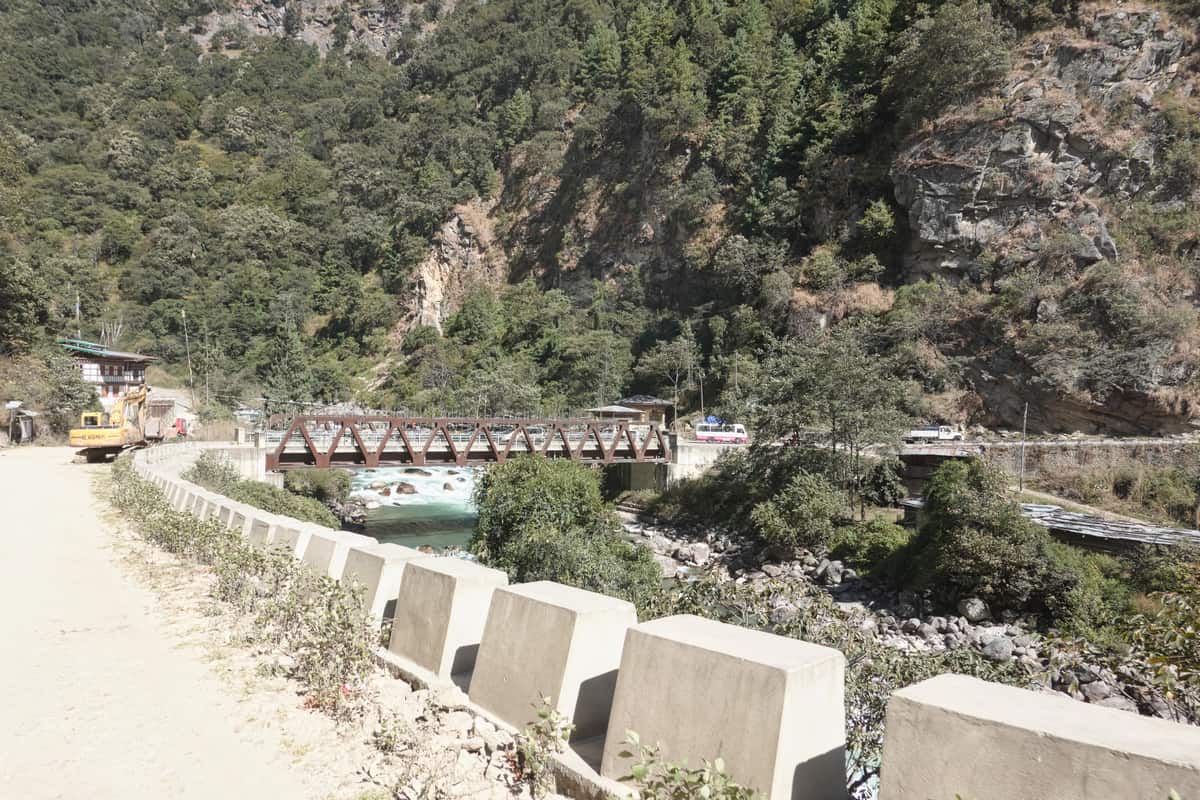
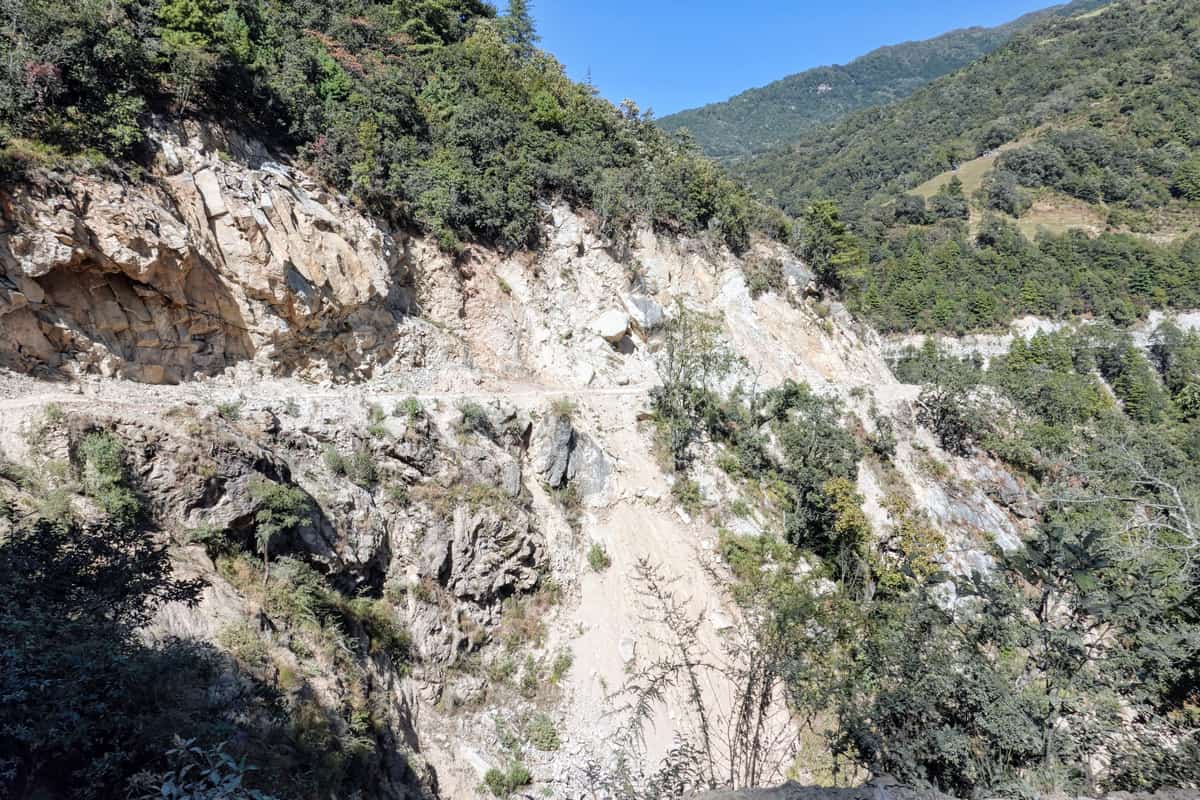
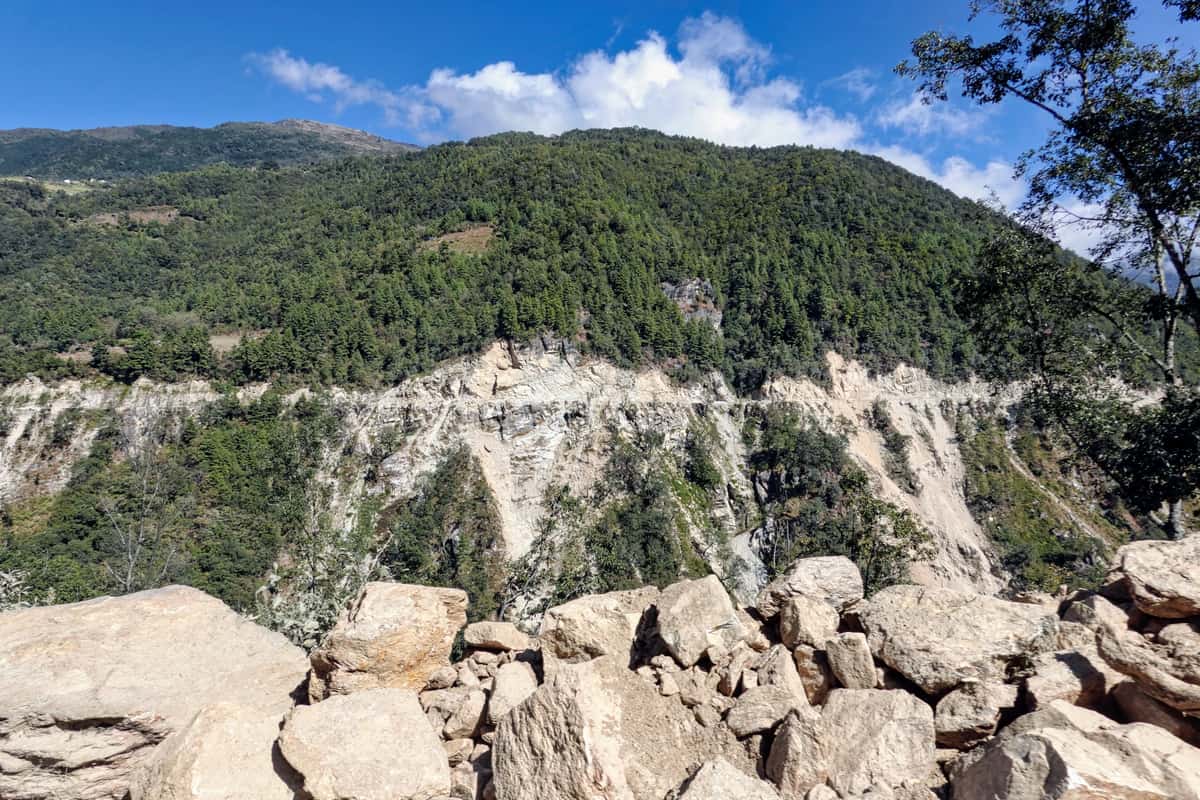
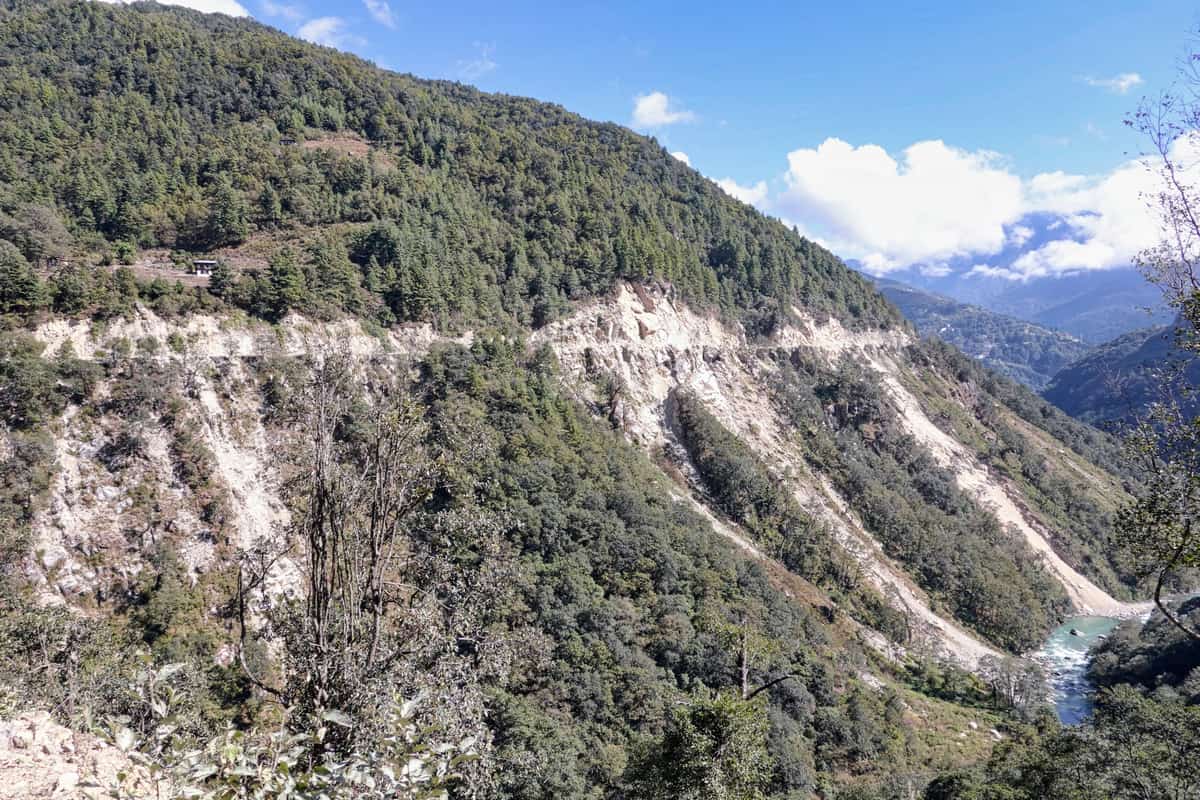
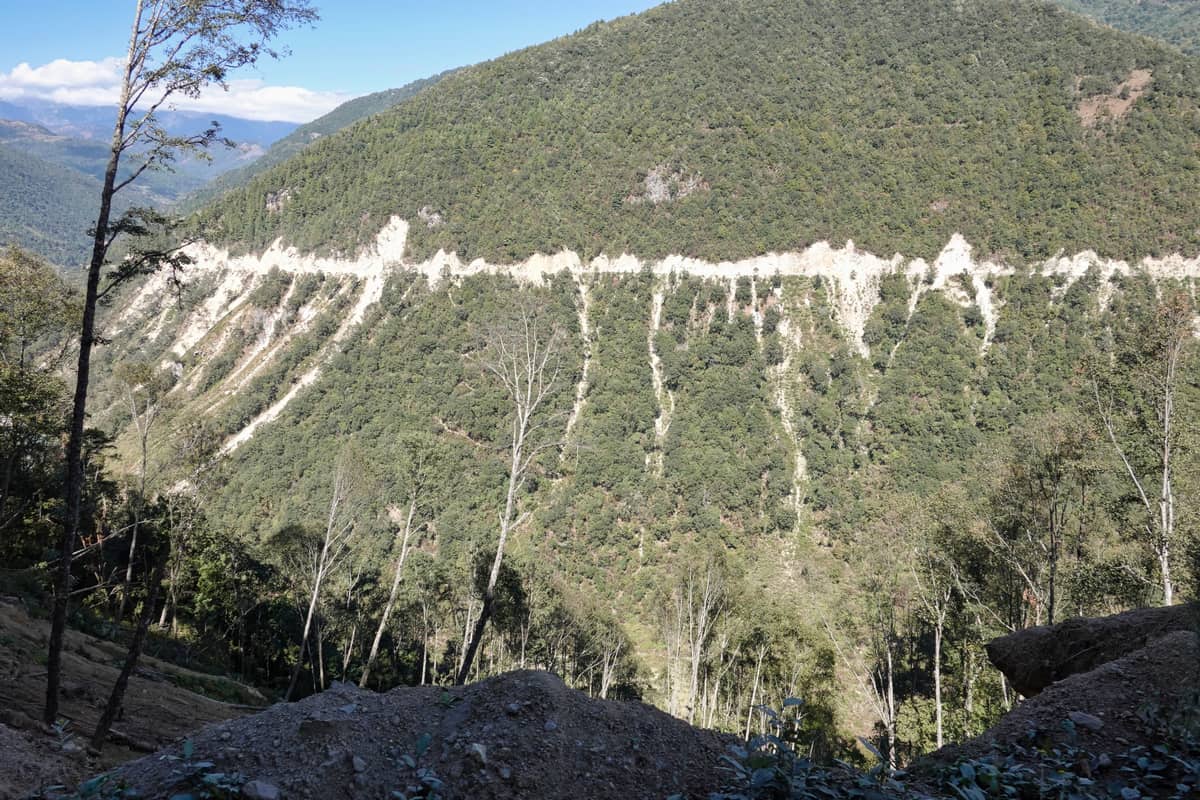
Experiencing Bhutan’s Beauty From the Lateral Road
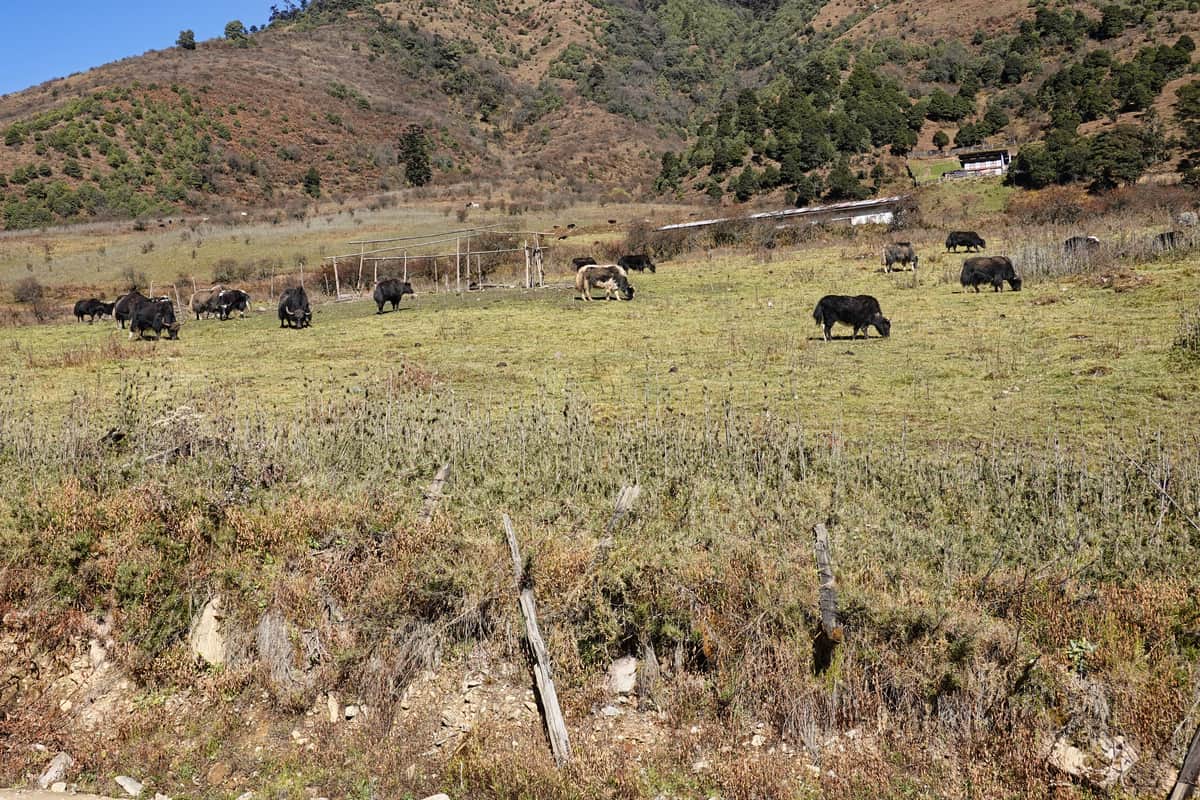
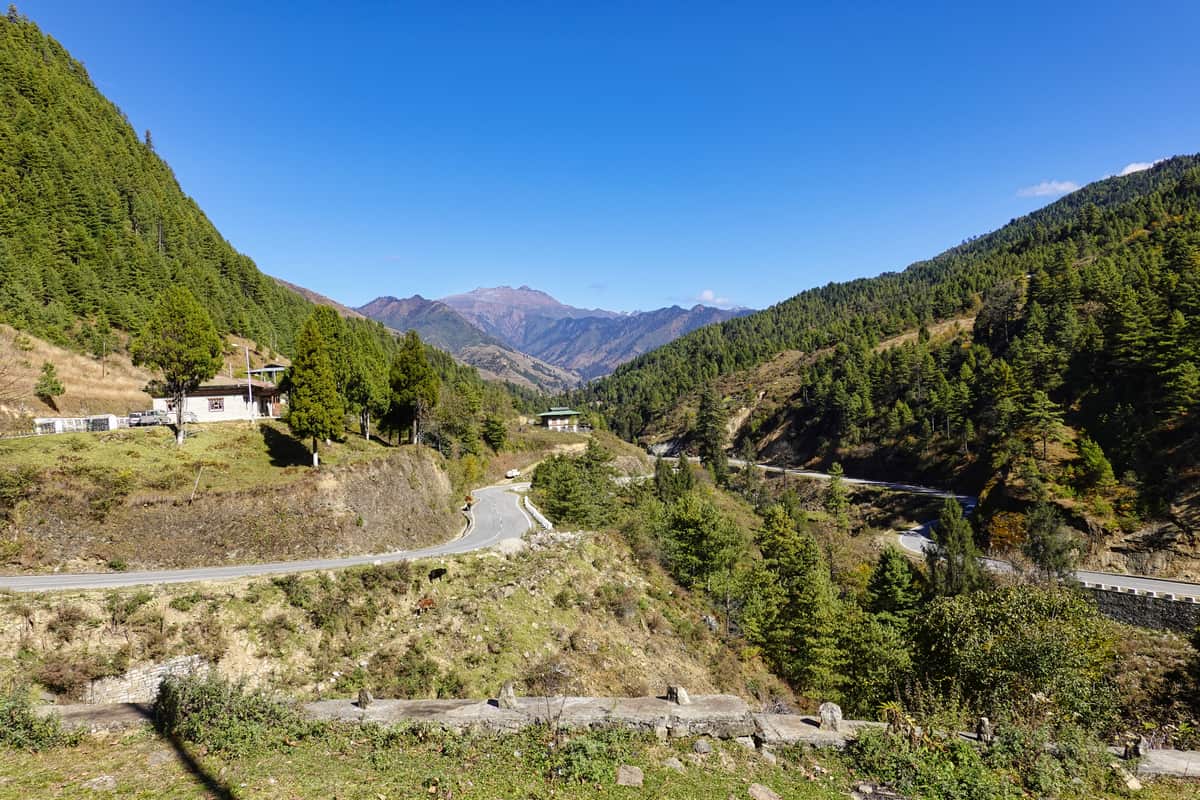
So when we added up all of these experiences:
- Bhutan’s Famous Lateral Road – Bhutan’s primary east-west corridor
- Awesome Driver & Tour Vehicle – a Toyota Coaster Bus
- Bit of Danger and Excitement – due to lots of curves and complex road conditions
- Get to Experience Bhutan’s Beauty – beautiful people, fascinating Buddhist culture, impressive architecture, beautiful Himalayan mountains, and natural beauty in all directions
- Slow & Steady Travel – taking time to stop off and visit destinations along the way
The end result was an experience we’ll never forget!
